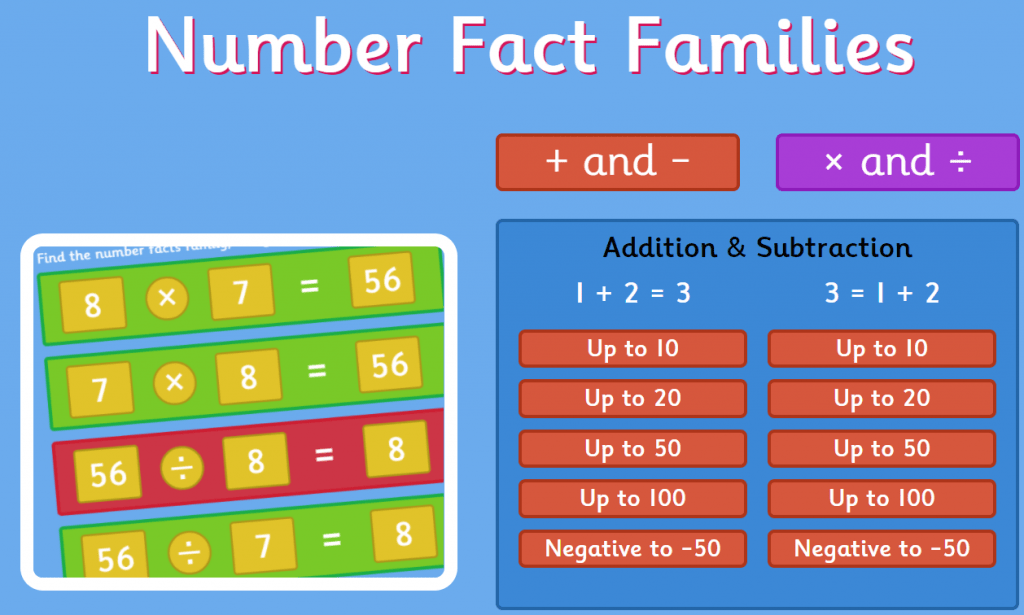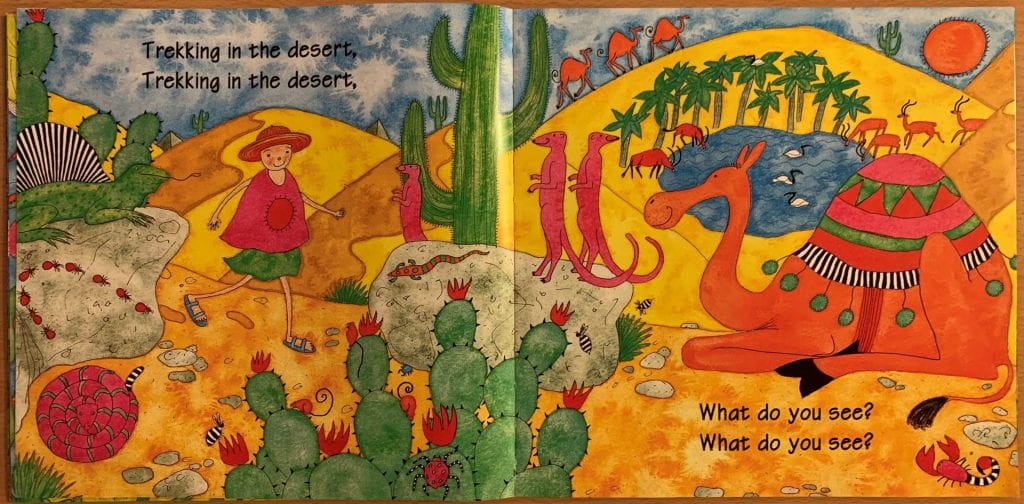The resources below are aimed to provide home based learning opportunities for children who are not currently in school with us.
The ‘Learning Project’ section gives all families ideas of activities to do to enrich their child’s learning at home.
The ‘Daily Activities’ are reading, writing, phonics and maths based activities to keep children up to date with their core subjects.
Some games & videos that the children in school have enjoyed recently are:
https://world-geography-games.com/en/world_oceans.html
https://www.sheppardsoftware.com/science/animals/games/animal-characteristics/
Friday 12th February
Phonics task
Dinosaur Bingo!
Download the dinosaur phonics cards below and choose either a few to print out (however many people you have to play at home) or draw your own to play bingo!

After our phonics Zoom practice some alternative spellings of ‘n’ with this game
Maths task
Here is the video we used yesterday in maths, incase you want to watch the whole thing!
Maybe you could make your own number line in 10s if you have some paper cups?
Have a go at filling in the missing tens in this winter activity. If you’d like an extra challenge you could edit it so you start at 100 and go up from there…

Have a go at this one, or make your own ‘dinosaurs and ladders game to play with your family

Reading task
Guided reading – Friday
The Good Dinosaur

Learning Project

Make a 3D dinosaur model using recycling! This could be a project for over half-term when you’ve collected some of the boxes/tubes/cardboard that you need/
Thursday 11th February
P.E.
Learn the ‘Do the Dino’ dance
or
The Dinosaur stomp

…then choose one other activity from the P.E. and Outdoors section of the blog.
Writing task

If you haven’t done it yet, draw a picture or make a card for someone at school that you haven’t seen for a while.
What could you ask them? What could you tell them? What are you looking forward to doing with them when we’re back at school?
Post your work on Tapestry and we’ll tag the person it’s for in the post so they can see it!
(Don’t forget the grown-ups! We like receiving messages from you too!)
Phonics task
Practice the days of the week with Roy the Zebra then see if you can unscramble the days in the activity below
Reading task
Read ‘Dinosaurs’ on Bug Club (it has been allocated to everyone)
Watch The Worrysaurus by Rachel Bright & Chris Chatterton
Maths task

Make a dinosaur with 2D shapes (you can cut up your own with paper or cardboard, use washable things from around the house to print with paint, or draw around objects with the correct shaped faces!)
Play ‘spot the coins’ – focusing on 1p, 2p, 5p and 10p
Learning Project
Pasta skeletons
Either use a picture of a skeleton or use a plain piece of card (an old cardboard box would be perfect!) to design your own dinosaur skeleton using pasta and PVA glue (flour and water mixed to make a paste works as a replacement glue).
This website has lots of pictures of dinosaur skeletons to help you decide which one you’d like to make.
Wednesday 10th February
Writing task

Make your own ‘Top Trump Cards’ or fact files on Dinosaurs to use as a game to play with your family
The Dinosaur ‘Guess Who’ game, or the information matching game below might give you some inspiration
Phonics task
Complete the ‘oo’ alternative spellings activity

…then play the games set on Bug Club that practice the alternative spellings we have been working on over the past weeks
Reading task
Access the guided reading slides below

Then learn all about some other extinct animals!
Maths task
Play this coins game to become more familiar with counting coins under 10p (1p, 2p, 5p, 10p) – choose the ‘counting’ option and have a play!

Make salt-dough to print dinosaur footprints/fossils or whatever you have around that could be dinosaur themed

Learning Project
Create a dinosaur shadow painting! If you have a dinosaur toy (and if the sun is shining) you could draw around its shadow to create your dino, then use water colours or watered down paint to create a sunset for the background!
Extras
Choose another episode of Andy’s Dinosaur Adventures to watch!
(click on the picture below)
Tuesday 9th February
Writing task

Look at the two PowerPoints above (they both have ‘read to me’ buttons so children can access them independently) then draw a picture or make a poster showing the possible causes of extinction.
Maths tasks

Fill in this interactive calendar – how many days is it until Chinese New Year?
practice some of the things we did in Maths yesterday, remembering…

and that when

Play on this interactive board and see how you can show these statements
Make a dinosaur headdress
Watch the clip below, and pause whenever you need to. Your headdress can be whatever colour you like, and have as many spines and you like! Can you make a repeating pattern when you decorate it?
Learning Project
Painted hand dinosaurs prints
You can name your hand dinosaur after yourself!
Andy’s Dinosaur Adventures
Choose an episode to watch by clicking on the picture above!
Monday 8th February
Writing task
Find a big piece of paper or cardboard (we’ll be adding to this task throughout the week). Draw and write any information you know about endangered animals. Do you know the names of any and what they look like? Where do they live?
The photo below will give you a few clues

Reading task
Access the guided reading slides below

Maths Task
Make your own rainbow number bonds to display and practice at home


Phonics task
Read the tricky word dinosaur (if you have a printer you can colour them in if you can red them!)

Learning Project
Endangered animals – Make a ‘Save an animal’ poster with pictures and facts about one of the endangered animals you have learnt about
Monday 31st January
Reading task

Read along to the eBook ‘In the Desert’ (login details are found under the ‘reading’ tab at the top of the page) then watch this What is a desert habitat? clip and have a go at the questions afterwards
Phonics task
Choose a game to play from below to practice your phonics skills:
- Phonics play
- Top Marks
- Spelling
- Spell the days of the week using this tricky snowflake game
- Spell common exception words using the ‘train your brain’ game on Phonics Play
- Spelling City
Below is a activity sheet to practice the alternative spellings of the ‘oa’ sound taught in phonics today
Writing task
Download the ‘Deserts’ PowerPoint below (it has ‘read to me’ buttons on each page, so your child can access it independently) then write a set of questions about desert animals you would like to find out more about this week

Maths task
Play on Number Fact Families – find the addition and subtraction fact families for numbers up to 20, 50 or 100.
Practice addition and subtraction within 20 with our quiz from Friday Access this lesson using pin code: PJ3954
at Twinkl Go
Tuesday 1st February
National Story Telling Week
Alternatively, you could write the words on post-it notes or pieces of paper and play a game of find the word around your house!
Writing Task
Have another go at making an Animal Alphabet (thinking of an animal for each letter of the alphabet). If you’d like an extra challenge think of an alliterative adjective to write before it e.g. Enormous Elephant!
Below is a sheet you can fill in if you like
If you’re finding it tricky, have a look at this painting below!

Maths task

Work on RMEasimaths – your child will have an individual login to access this.
Phonics task
Choose a game to play from below to practice your phonics skills:
- Phonics play
- Top Marks
- Spelling
- Spell the days of the week using this tricky snowflake game
- Spell common exception words using the ‘train your brain’ game on Phonics Play
- Spelling City
Below is a activity sheet to practice the alternative spellings of the ‘oa’ sound
Wednesday 2nd February
P.E. tasks
Choose from P.E. with Joe Wicks, the ‘P.E. at home’ session or the PowerPoint below with invasion game challenges (that the whole school has been set!)
Reading Task
Listen to the recording below (or mute the video and read along yourselves!). Can you find adjectives in the book used to describe the animals? If you have any animal books at home you can have a look in them to find adjectives too.
You can also have a go at this ‘eye spy animal picture’ and see if you can find all of the different animals. Can you name them all?
Maths task
Use this number generator to pick a number between 2 and 20 then make a poster of all of the different ways to make this number using addition, subtraction, multiplication etc.
Writing task
Create a fact file about your favourite desert animal or research a desert animal of your choice and explore the vocabulary required to describe them.

Thursday 3rd February
Reading task
Take a look at one of the eBooks below on the Oxford Owl website (you will need to have set up a free account to access them)

Maths task
Practise counting in 2s, 5s and 10s. There is a fun song below and these games that can help:
Writing task
Write descriptive sentences for some of the desert animals you see in the illustration from ‘walking through the jungle’.
Have you learnt about any other desert animals that aren’t in the illustration? Have a go at drawing one in the style of the book.
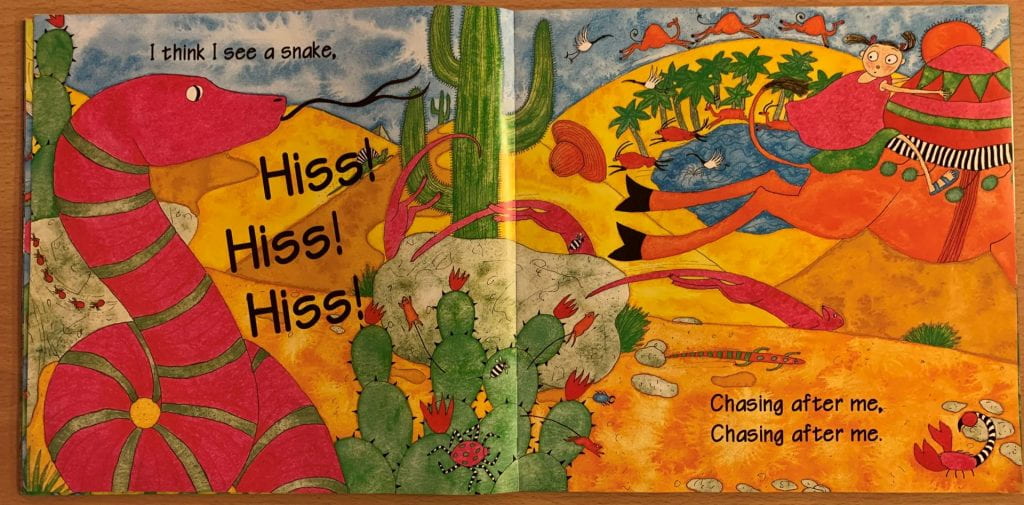
Describe similarities and differences between animals in different classes. The printable posters below might give you a few ideas!
Carnivores, Herbivores and Omnivores!
Download this talking PowerPoint to find out more about which sets animals are organised into:
Phonics task
This is an extra challenge – complete this activity sheet *after* the phonics Zoom session
Friday 4th February
Maths Task
Have a look in the garden or take a local walk to look for leaves. Collect all of your favourites then see if you can identify what they are then organise them into groups. How many do you have of each? How many are there altogether? Take photos of different representations e.g. first, then and now maths stories, part-whole diagrams, bar model. You could even stick them on paper to show us!

Reading task
Listen to the story ‘Library Lion’
Did you like the story? Why?
Who is your favourite character? Why?
What might happen next?
Desert Habitats
Download this PowerPoint to find out more about hot desert habitats and cold desert habitats!
Writing task
Make a card or write a letter to one of your friends from school that you haven’t see in a long time (then post it on Tapestry so we can tag them, and they’ll be able to see it!)
Think about what you would like to tell them.
What can you ask them?
I wonder how they’re feeling? What could you say that might make them feel happy?

Learning Project
Animals
The project this week aims to provide opportunities for your child to learn more about key animals they are interested in. Learning may focus on exploring the physical aspects of an animal, their habitat, categorising animals etc.
Find out about:
What are mammals?
What are amphibians?
What are birds?
What are fish? What are reptiles?
What are insects?
Check out this video on Twinkl Go about animal classes
using pin code: PJ7650
Then you could play the ‘grouping animal classes game’ or download the interactive animal groups activity below
Create a mask:
Using different materials around the house, create a mask of your favourite animal. Think about the colours and shape. Can you add different textures to the mask to make it look more realistic? Why do you think your animal has markings like it does? Is it to do with camouflage? You could play the ‘camouflage jigsaw game on Twinkl Go access using pin code: PJ7650
What do animals eat?
Download the interactive PowerPoint below and learn about carnivores, herbivores and omnivores (the PowerPoint has a ‘read to me’ function on each page). Then access this lesson using pin code: PJ7650 at Twinkl Go to practice grouping animal diets.
Animal grouping:
Get your child to group animals into two columns. Identifying animals that can fly and cannot fly. What do animals eat? Scientists group animals into three different groups according to what animals eat. These groups are carnivores, herbivores and omnivores. Carnivores eat other animals, herbivores eat plant material including fruit, leaves, vegetables, omnivores eat a mixture of meat and plant material. (Animals that eat other animals are called carnivores. Animals that eat plants are called herbivores. Animals that eat both plants and other animals are called omnivores)
Nocturnal animals:
What do you think this word means? Watch this clip and talk about the animals you see. Have you seen any of these animals in real life? How could you describe them? Nocturnal animals are more active at night than during the day, play this game to explore further. These animals sleep during the day, often in a burrow or den. They have special adaptations that help them survive in the dark. Over millions of years, these animals have developed traits that help them survive in the darkness. Nocturnal animals may have larger ears to hear better, bigger eyes to see better, and body parts that glow in the night. Create your own big-eyed nocturnal animal art.
Planet Earth II:
watch the Planet Earth II episode – deserts and then have a go at completing the quiz afterwards. Now that you’ve found out so much about desert landscapes, how about creating your own!? You could draw, paint, papier mache, junk model… whatever you have available. There are some activity ideas here (click on the photo to take you to the website):
to be done throughout the week (if possible)
The project this week aims to provide opportunities for your child to learn more about countries and cities around the world. Learning may focus on different cultures and traditions, famous landmarks, food and clothing.
- Flags- Look at flags from around the world with your child. Discuss which are their favourites and why? Ask your child to recreate their favourite; this could be through drawing, collaging etc. Can they place the flag on a map? There are some quizzes that your child can have a go at here. Can they create their own quiz about the UK?
- Dance Around the World- Watch the following dances: Diwali Stick Dance, Maypole Dancing and Spanish Flamenco Dancing. Encourage your child to have a go at some of the moves used in these videos. Record the dances and ask your child to evaluate what they did well and what they could do even better when watching them back. Can your child recreate one of the costumes using items from their wardrobe? Perform the dance to a family member!
- Food Tasting Fun- Find some different fruits from around the world. This could include: mangos, kiwis, pineapples, bananas. Encourage your child to try them and have a discussion about which ones they liked and which ones they did not like. Cut the fruits open and task your child with sketching the inside of each fruit. Remind them to look closely at the patterns and shapes.
- Where in the World? –Have a discussion with your child about your own family heritage. Discuss with them your traditions and where your family originates from. This may be where you live now or it could be somewhere completely different. Ask your child to create a poster or PowerPoint all about their own family. Can they include a map identifying the country they’re from? Share these on Tapestry and let us know if we can post photos of the blog so children can compare families.
- Speak the Language- There are lots of different ways to say hello around the world. Learn how to say hello in Spanish, French, Mandarin, German, Arabic and Italian with your child using Google Translate. Practise writing hello using the colours of the flag for each country.
- River Art- draw/paint/collage a river scene with birds, fish and animals. Look at these famous artists’ river pictures below for some inspiration!
London Parliament in Winter by Claude Monet
The Hay Wain by John Constable
The Seine At Asnieres by Pierre Auguste RenoirMaybe you could try including one of these river birds in preparation for the Big Bird Watch this weekend.
STEM Learning Opportunities
Engineering Around the World – World’s Largest Steel Structure
- The Bird’s Nest is the world’s largest steel structure and was built in China for the 2008 Olympic Games. It is made out of 26 miles of steel.
- Use strips of paper, card or wool to create your own bird nest style building.
Monday 24th January
| Reading Tasks | Phonics Tasks |
| Ask your child to look through their books and identify any places from around the world by looking at the illustrations. They could also look through a magazine or newspaper to see what they can find. Are the places similar to Cambridge, or different? How? | This week in phonics we are focusing on alternative spellings for the ‘igh’ sound. Walk around your home and see how many different things you can think of with the ‘igh’ sound e.g. switch off/on the light, tell the time etc. Alternatively, play ‘eye spy’ with this picture and look for all of the things with the ‘igh’ sound in them. |
| Writing Tasks | Maths Tasks- Subtraction |
| This week’s focus in our story is rivers! Take a look closely at the pages below from ‘Walking through the Jungle’. What do you see? Write it down using full sentences e.g. “I can see a hovering dragonfly” Which animals do you not know the names of? Where might you be able to find out? | Get your child to have a go at the online game for subtraction facts up to 20. or Go on a number hunt (either around the house or on a local walk) and every time you see a number say it then say one/ten/one hundred more/less than it e.g. |

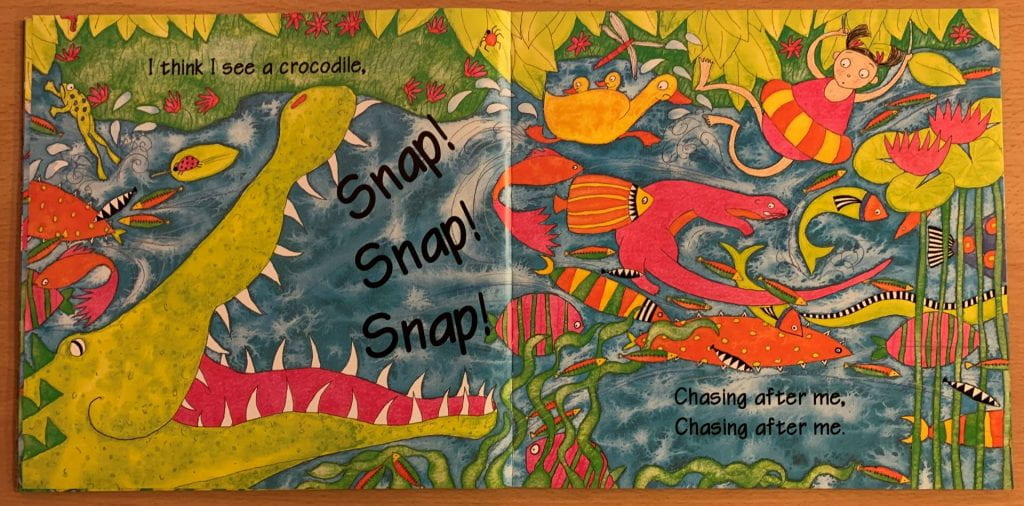
Tuesday 25th January
| Reading Tasks | Phonics Tasks |
| Follow the story ‘A River’ by Marc Martin either read on YouTube or by Ms Campbell with your child. What makes the river special? Using the story, your child can make a list. | Practise spelling days of the week using different materials in the house. You could cut up magazines, use magnetic letters, organise pebbles or sticks outside, print them in playdough… the options are endless! |
| Writing Tasks | Maths Tasks- Subtraction |
| Rivers are used to transport fresh produce around the world. Draw a picture of 10 different pieces of fruit or vegetables from around the world and label them using adjectives. As a challenge, try using a comma between the adjectives, too e.g. ‘fresh, juicy pineapple’. | Give your child a number between 1 and 50 and ask them to list how many ways they could make the number using subtraction. They could show their working in many different ways like on ten frames, number lines, part-whole diagrams |
Wednesday 26th January
| Reading Tasks | Phonics Tasks |
| Help your child to look through cookery books for a recipe originating from another country. Ask them to use decoding skills (sounding out the words) to read some of the ingredients. Why not make it, if you have the ingredients!?If you don’t have a cookery book to hand, there are lots of websites with child-friendly recipes like this one or this one. | ‘Where’, ‘would’, ‘people’, ‘clothes’ and ‘water’ are some of the words that children in KS1 need to be able to spell. Can your child use these to write sentences about things people do around the world in, on and near rivers. Play this snowball game to practice the alternative spellings of the ‘igh’ sound in worlds |
| Writing Tasks | Maths Tasks- Subtraction |
| Wednesday-Your child could write a set of instructions for a meal they would love to share with family and friends (which could be inspired by the reading task above!) They can use illustrations too. | Wednesday- Get your child to write a subtraction number bond to or within 10 -e.g. 9 – 4 = 5 or 7 – 2 = 5. Can they use these facts to find out the subtraction facts up to 100? E.g. 90 – 40 = 50 and 70 – 20 = 50. To help with this you could use 1p coins for the numbers below 10, and then 10p coins to represent the 10s to make 100! There’s an online game here to play if your child in interested in money |
P.E.
Choose between P.E. with Joe (from last year), 5-a-day-fitness or if you can, get outside – running, jumping, throwing, catching, dodging, climbing, dancing – all things we need to practice!
Don’t forget to check the Phonics & Writing and Maths tabs for additional resources.
Thursday 27th January
| Reading Tasks |
| Use an atlas or a map and locate some of the biggest rivers in the UK. This interactive map is great (but a bit fiddly) and below this table there is a pdf map and link to a labelling activity. This map has beautiful illustrations. Can your child then locate a river in a different country? What is different about the environment it travels through? What is the same? The Nat Geo Kids website has a great fact file about rivers or there is a Twinkl fact file here. Read along to ‘Brilliant Bridges’ Username: parents@harpercollins.co.uk Password: Parents!21 |
| Phonics Tasks |
| Can your child write about things you would find in, on and around a river? Can they add an adjective before each that starts with the same letter? e.g. ‘A bobbing boat’(you could use the illustrations from ‘Walking Through the Jungle’ as inspiration). There is a downloadable writing template below if you would like it. |

| Writing Tasks |
| Your child could write a letter to a friend or a family member who lives in a different part of the world – describe where they live and describe school. Think of questions to ask about where they live and about their school. |

| Maths Tasks- Subtraction |
| Look at flags from around the world either in books or on the internet. Ask your child to list any shapes they see and name the properties of the shapes they find. Talk about symmetry and look to see which flags are symmetrical (it’s a fun opportunity to use a small mirror to check!) |
Build your own bridge challenge!
Once you’ve done that…
Friday 28th January
Reading task

Follow the story When I Coloured in the World. What would your child change about the world? Task them with drawing a picture of their ideal world and maybe even labelling it!
Phonics task
Recognise vowel and consonant digraphs and practice blending by playing this game or learn about adding suffixes by playing this game.
Alternatively log on to Bug Club to play your phonics games on there.
Writing task

Use this wonderful resource on the story of ‘The Black Hat’
or
your child could write their own version of a section of the poem ‘When I Coloured in the World‘

Maths task
Encourage your child to practise different ways of subtracting by playing these different activities.
Choose a total that suits your child’s ability, and ensure you have resources available for them to use to work out their answers.

Don’t miss out on getting involved with the Big Garden Birdwatch this weekend! All of the resources are available here
Monday 17th January
| Maths task | Reading task |
| Working on RMEasiMaths – your child will have an individual login to access this – please contact Miss Joyce if you do not have this. | Listen to one of these information videos about caring for the environment. clip 1 clip 2 Discuss with your child after. |
| Phonics/spelling task | Writing task |
| Daily phonics -Use Bug Club to help your child to practice their sounds and blend words. If you’re not sure of your child’s login details please contact Miss Joyce. | Watch Maddie’s ‘do you know?’ about bin lorries and recycling then write a ‘thank you’ letter to the people who collect your rubbish and recycling. What could you include in your letter? Can you think of any questions you could ask about recycling or where the rubbish goes? |
Tuesday 18th January
| Maths task | Reading task |
| Practise counting 1 more/less and 10 more/less. This game could support this. Look out of your window or stand in your front garden and count how many cars go past. What is the most popular colour that passes? What is the least popular colour that passes? Can you record it using a tally? | Read a story that has a woodland in. If you haven’t got any at home here are a few links ‘Tidy’ by Emily Gravett (this one links really nicely with some of the environmental themes this week), ‘A House in the Woods’ by Inga Moore, ‘The Wild Woods’ by Simon James |
| Phonics/spelling task | Writing task |
| Daily phonics -Use Bug Club to access games that practice the alternative spellings of ‘ee’ Check the phonics section of the blog and choose an activity for your child to complete. | Watch (0:36-0:53 seconds) or take a look below at the pages of ‘Walking Through the Jungle’ that focus on the mountains. What animals can you see? Write as many full sentences as you can, using describing words if possible e.g. ‘I can see a swooping eagle!’ If you’d like to find out more about mountain animals like the mountain lion have a look on NatGeo kids. |
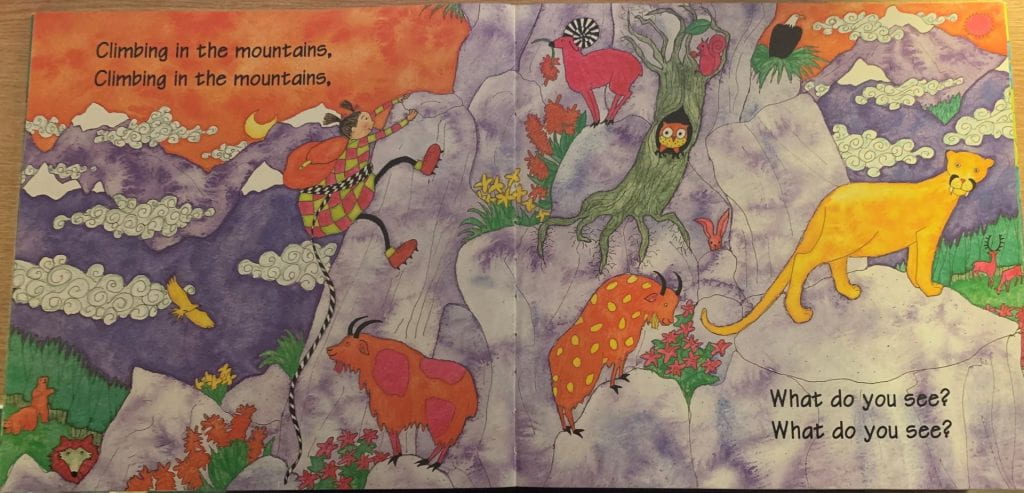
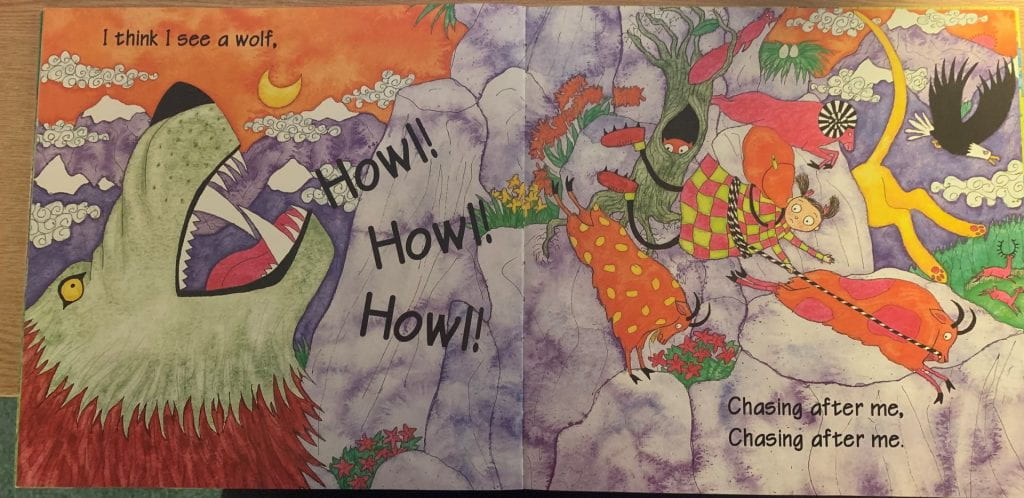
Wednesday 19th January
| Maths task | Reading task |
| Practise telling the time. This could be done through this game (scroll down the screen to access the game) or this online resource. Is there anything you do throughout the day that happens on the hour, or half past? (phonics and maths times are a good place to start!) The challenge is to read to the hour and half hour. | Find and read a book aloud about materials. (Everyone has been allocated ‘This Floats, that sinks’ on Bug Club). Discuss the materials you find and place them in alphabetical order. Are there any more materials in this video that you didn’t see? |
There are some BBC clips about ‘materials’ here, if your child would like to find out more
| Phonics/spelling task | Writing task |
| Daily phonics -Use Bug Club to access games that practice the alternative spellings of ‘ee’ Check the phonics section of the blog and choose an activity for your child to complete. | Can you label the plants in your garden or in the house? How often do they need water? Do they need much sunlight? |
Thursday 20th January
| Maths task | Reading task |
| Choose a number between 0-100. Make a poster showing how many different ways can you represent this number? Can you use part-whole models, bar models and tens and ones, tallying, a clock… to show the different ways? (see below for an example of representations of 17) | Listen to Newsround (you don’t need to watch the whole thing!) and discuss what has been happening in the world this week. What new things have you found out? If you enjoyed it, why not try making your own newspaper! Have a go at reading this non-fiction book about wolves, too. |

| Phonics/spelling task | Writing task |
| Daily phonics -Use Bug Club to help your child to practice their sounds and blend words. If you’re not sure of your child’s login details please contact Miss Joyce. Check the phonics section of the blog and choose an activity for your child to complete. If you’ve ran out, there are loads more resources on Twinkl that you can download. | Watch the weather report (storm Christoph is fairly exciting at the moment!), scroll down until you get to the ‘BBC Look East Weather’ then, write your own weather report. Can you use any adjectives (describing words)? If you haven’t had a go yet, see if you can video record your report using a phone or tablet and upload it to Tapestry! |

…then have a go at matching the instruments to the characters (and drawing them, too!)
Have a go at re-telling the story on your own by drawing the pictures to match the text
Why not listen to one of the Year 1 grown ups reading you a story, too!
Friday 21st January



| Maths task | Reading task |
| Practice ‘instant recall’ facts to 10 or 20. This game can help or for a more active game work in a pair to “make 10”, “make 20” or “make 100”. The first person thinks of a number to 10/20/100 then jumps that number. The partner must jump the appropriate number to “make 10/20/100″ (see the diagrams below for more information) | Go for a local walk, or have a look at the photos above this table. which digraphs (2 letters, one sound) and trigraphs (3 letters, one sound) can you see? Are there any alternative spellings that we’ve learnt over the past two weeks? (ai, ay, a, a_e, eigh, ey) (ee, e, ey, y, ea, ie) |



| Phonics/spelling task | Writing task |
| Daily phonics -Use Bug Club to help your child to practice their sounds and blend words. If you’re not sure of your child’s login details please contact Miss Joyce. Check the phonics section of the blog and choose an activity for your child to complete. If you’ve ran out, there are loads more resources on Twinkl that you can download. | It has been raining a lot recently! Watch this video. Can you remember how to make the ‘rain cloud in the jar’? Write a set of instructions and then find out if you have what you need at your house to make your own! |
Learning Project – to be done throughout the week
Environment
The project this week aims to provide opportunities for your child to learn more about the environment. Learning may focus on changes to different environments, the impact of humans on environments, climate change etc.
Create a chart to record the weather. Label the chart with days of the week and record the weather at different points in the day. Can you write down key words and take a photograph of the sky. Does it change in the week?
Watch the weather report on T.V. How do they describe the weather? What do you notice about the map? Can you find Birmingham on the map? Have they got symbols when they are talking about the weather?
Weather reporter Pick a day that you would like to present as a weather reporter. Can you create some symbols to use when you are talking about the weather? Can you talk about the weather in your local area and maybe compare to another place in the UK, the Arctic or the rainforest?
Create a weather wreath Using different materials can your child design a weather wreath? Encourage them to think about the symbols used in your weather report.
What a load of rubbish! With your child look at the rubbish as a family you
throw out. Do you help to recycle? How do you sort these into rubbish and into recycling? Look at the range of items and group them into different material groups. Talk to a family member about how certain groups are plastics and can also look and feel different to each other. Could you design a new way to help recycle more items? Ideas
Beat the clock Can you sort items into the correct recycling and waste bins? Play
Switch it off Ask your child to take a look at all the electrical devices in your house. Are they all plugged in? Do they need to be plugged in? How could they create a poster to place around the house to help remind people to switch it off once they have finished.
Save Electricity Recycle Paper, Conserve water. What could you include on these? Where could you place these in the house? Can you talk to your family about the posters and how you could help the planet?
Listen to a song about things we can do to help to save the planet.
Write and draw! Ask your child to choose one thing they could do to help the environment in school. Get them to make a poster to encourage people to do it! Think about the classroom and also the school.
Monday 10th January
| Reading Task | Phonics Task |
| Encourage your child to learn the rhyme ‘A Sailor went to Sea, Sea, Sea’. Click here for a video of the rhyme and lyrics. Can your child perform this rhyme by heart? | Go on a sound hunt with your child around the house/garden. They can list all of the items they can find containing the ‘ai’ sound. They may identify objects that contain an alternative way of spelling the ‘ai’ sound such as ay/eigh/a/ea/ey/a_e. |
| Writing Task | Maths Task – Time |
| Visit a desert island here. Ask your child to write a message in a bottle. What can they see, hear, feel, taste and smell? Why not roll the message up and pop it in a plastic bottle for the reading den? | Write the days of the week on paper and cut them up into cards. Take turns turning over the cards. If, when you turn the card, you have a day that is before or after the day shown you can say snap. This song is always fun to sing to remember the order too. |
Take a look at the ‘Phonics & Writing’ page, and the ‘Maths’ page for more printable resources too!
Learning Project
…to be done throughout the week
The project this week aims to provide opportunities to learn more about life in and around the sea. Learning may focus on the strange and wonderful creatures and plants that occupy our oceans, their habitats and how human beings affect this environment.
Guess Who? Ask your child to write fact cards about animals from under the sea. They can use books or websites to find out about the appearance, habitat and diet of each creature. After this, play a game of ‘Guess Who?’ using the cards and yes/no questions.
Junk Modelling Using junk or recycling materials from around the home, ask your child to design and make a Sea Turtle. Your child may wish to make another sea creature after this. Share your creations with us on Tapestry!
Put Your Goggles On Your child can visit this website and watch a live stream of a tropical reef. Whilst watching, ask them to sketch all of the animals that they can see. Remind them to look at the shapes and patterns on each creature and to include these in their sketches.
How do Humans Affect the Sea? Is your child aware of all of the ways that humans affect the sea and the living things within it? Talk about and investigate the impact that human beings have on the sea. Think about fishing, transport and pollution. Create a poster or information report.
The Oceans of the World Using an atlas or the web, ask your child to identify the world’s oceans, they may need some support with this. Can they find out what animals live in each ocean? This game allows your child to practise naming and locating the oceans, and this song is great to help remember the different oceans names.
Music – Carnival of the Animals by Camille Saint-Saëns Download the PowerPoint below and work through the slides at your leisure
Carnival of the Animals
STEM Learning Opportunities
Unplugged Coding Watch this video. Create a simple under the sea obstacle course or draw an obstacle course on a piece of paper. Write simple code to guide the submarine around the obstacles found under the sea. E.g. Rocks, shipwrecks, sleeping octopus.
Additional learning resources you may wish to engage with
Visit this BBC website for more sea themed music and learning ideas.
There are some lovely games and ideas from the Royal National Lifeboat Institution here.
White Rose Maths online maths lessons. Watch a lesson video and complete the worksheet (can be downloaded and completed
digitally).
IXL– Click here for Year 1 . There are interactive games to play and guides for parents.
Mastery Mathematics Learning Packs Learning packs with a range of different activities and lessons. There are notes on how to do these activities with your children.
Y1 Talk for Writing Home-school Booklets are an excellent resource to support your child’s speaking and listening, reading and writing skills.
Tuesday 11th January
| Reading Task | Phonics Task |
| Task your child with building an ‘Under the Sea’ themed reading den. Can they find some sea-themed books to cosy up with and share in there? | Can your child list words that they associate with the sea? Following this, ask your child to identify words that rhyme with these. |
| Writing Task | Maths Task – Time |
| Task your child with planning the perfect beach trip. Ask them to draw and label all of the things that they would pack including a picnic. Who would they take? What games would they play? How much time would they spend in the sea? | With your child, list different activities/chores they have to do throughout the day. Can they order them after making the list? Can your child sort them into the times of day each thing happens in (e.g. morning, afternoon, night etc)? |
Wednesday 12th January
Learn this short sea animal dance!
| Reading Task | Phonics Task |
| Ask your child to make a sea-themed bookmark. They could take inspiration from ‘Sharing a Shell’ or ‘The Snail and the Whale’. | Encourage your child to practise spelling the months of the year and then use them in a sentence. |
| Writing Task | Maths Task – Time |
| Speak to your child about all of the things that make them happy or all of the things that they’re grateful for. Ask them to record these in a list. | Write the months of the year on separate pieces of paper and mix them up. Can your child order them correctly? Can they sing you the months of the year song, too? |
Thursday 13th January
| Reading Task | Phonics Task |
| Your child could read a story/poem/nursery rhyme to another family member. This could be to a younger sibling before bedtime or they may wish to FaceTime an elderly relative (with adult supervision of course). | Your child could visit Phonics Play and play Buried Treasure. |
| Writing Task | Maths Task – Time |
| Help your child to create a fact file about the endangered Sea Turtle. Can they find out about its appearance, its diet and its habitat? This link may help. Following this, your child could draw a detailed sketch of the Sea Turtle. | Using a clock in your house practise telling the time with your child to the nearest hour, half hour, 15 minute intervals and 5 minutes intervals. |
Friday 14th January
Your child may be interested in watching an episode of ‘A Perfect Planet’ which covers from the frozen poles to the searing deserts. It shows how animals have come up with strategies to survive the uneven amounts of sunlight that fall on our planet.
| Reading task | Phonics task |
| Read along with ‘There’s a Hole in the Bottom of the Sea’ or listen to ‘How the Whale got his Throat’. Ask your child to retell one story by drawing a comic strip of the events. | Ask your child to write the alphabet using capital letters. Challenge your child to write the lowercase letters too. |
| Writing task | Maths task – time |
| Visit the Literacy Shed for this wonderful resource on The Lighthouse. Or, your child could design a beach safety poster. What tips would they give beach-goers for staying safe at the seaside? | Ask your child to survey the family about their favourite sea creature (choose from 5). Represent the results using a tally chart or a pictogram. Which sea creature was the most popular? Which was the least popular? |

Have a go at writing a ‘thank you’ card to someone who has done something nice for you (given you a card or gift, helped you with a job etc.)
This card template may be of interest
If your child is learning from home this week….
Week beginning 13th December
Our focus until the end of term is ‘How Christians Celebrate Christmas’ (part of our R.E. objectives for the year).
Here are some printable craft activities to do your very own ‘craft day’:
or a link here to some other craft ideas
Phonics
Here are a few printable activities you could do:
Please work at a level that is accessible for your child. There are lots of other resources under the ‘phonics and writing’ tab.
Please also continue to use Bug Club to access daily reading and phonics materials.
Maths
Our focus in maths this week is ten. Below are some paper based activities to support your child’s developing understanding and exploration of ten and how it can be ‘made’
Please also continue to use RMeasimaths to access online resources.
Week beginning 6th December
We will be learning the Christmas story, ordering it and acting it out to re-tell it. We will then be looking in to how Christmas is celebrated.
Here are some of the resources that may be helpful at home:
Where there are activities to complete, you will see there are different options depending on your child’s ability. If you’re not sure what to give them please get in touch and we can advise you.
Phonics
In phonics this week our focus is RHYMING! Each day we will start the session with the ‘Presentation Starter’ PowerPoint to review the phonemes and graphemes we have already covered, then we will move onto the rhyming activities below’.
Here are the PowerPoints and activities we will be doing in class:
Maths
In maths this week our focus is ‘nine’. There are a number of PowerPoints and activities which should be accessibly for your child at home:

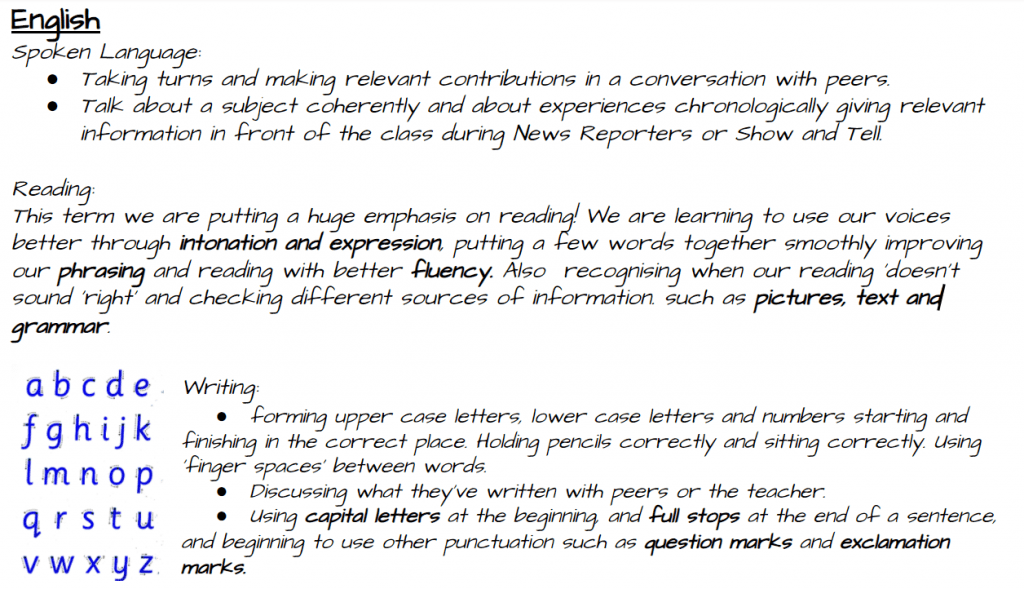

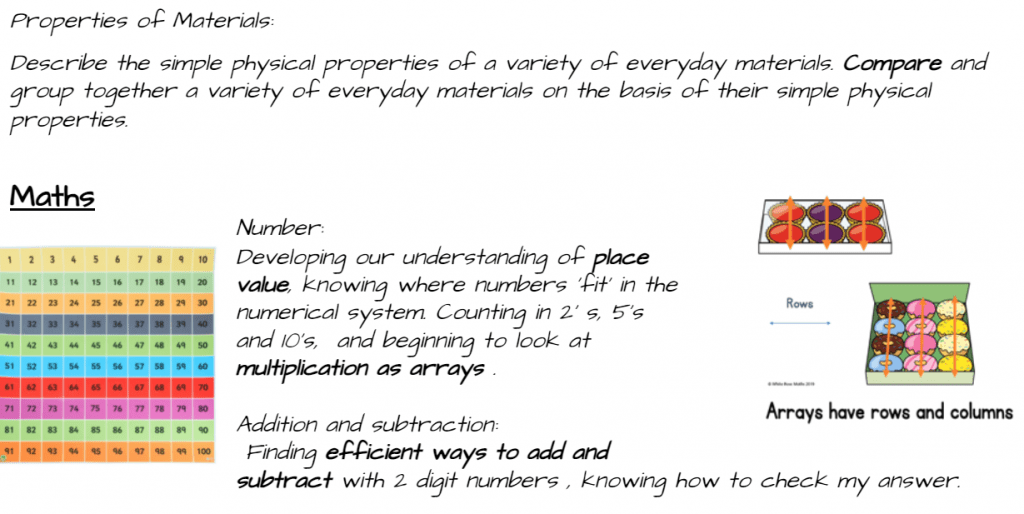

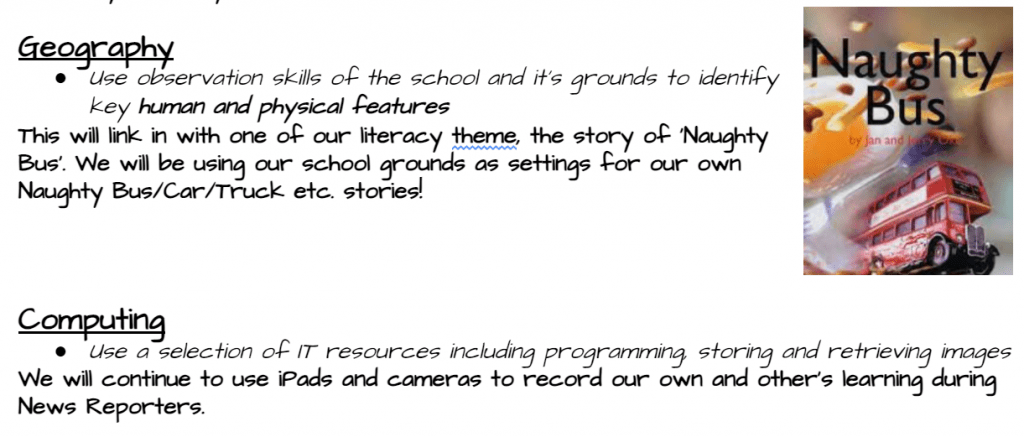
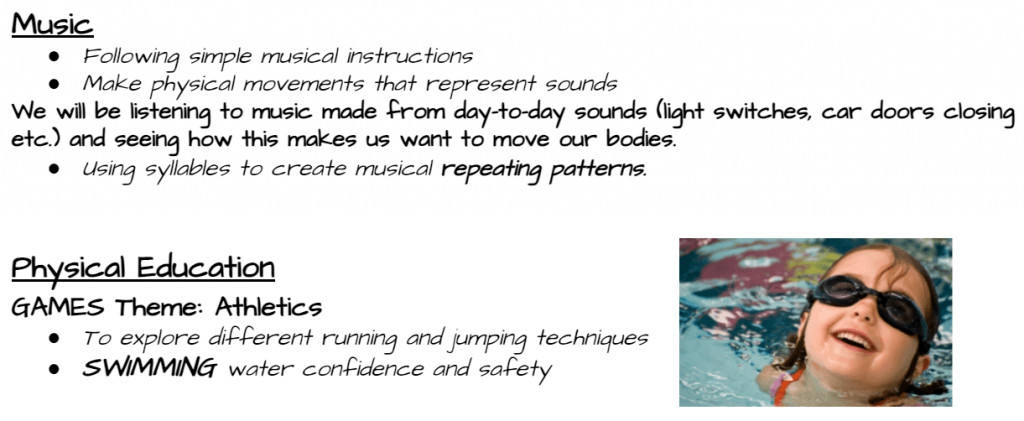

Please scroll down to see some of the things we’ve been up to over the passed terms!
Shipmates!
This week we are learning about Jason and the Argonauts!
If your child is learning from home then please have a go at these activities:
Read the story together (on the last page) then use the sentence starters on the first page to write about it.
Book week!

We will be basing some of our activities on fairytales, so have a think about which ones are your favourites!
Visit the ‘epic!’ website where we have collated a library of fun alternative fairytales for you to enjoy (you may have to create a free account to access this)
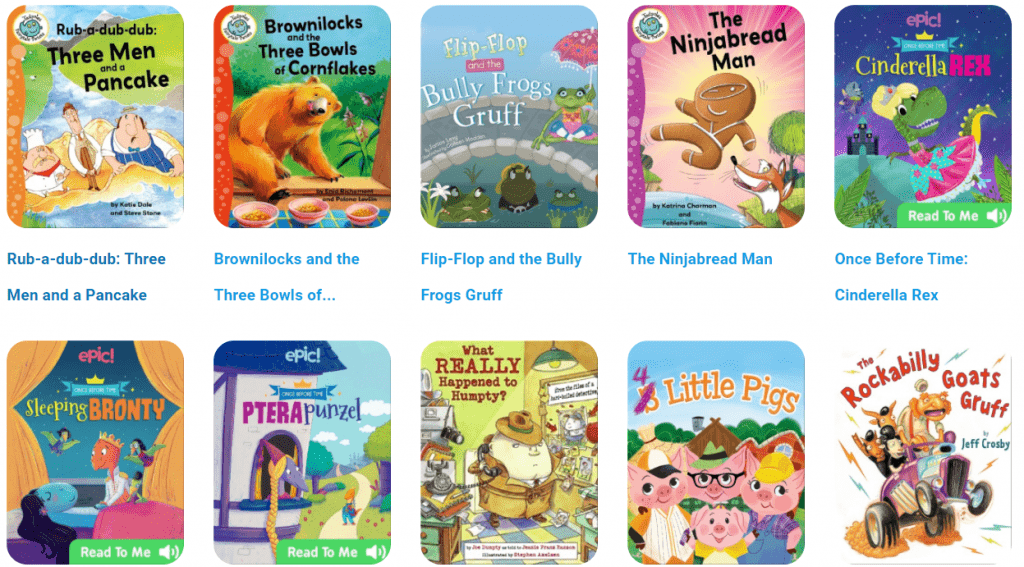
Friday 5th March
Assembly
Phonics task
Download these ‘I Spy’ pages and see how many words you can write from each page using the ‘alternative spellings of vowel sounds’ e.g. donkey rather than donkee.
Play this oi/oy spelling game (feel free to turn the sounds down… I fear this one could drive anyone to despair!)

Have a go at this ‘alternative spellings for r’ activity after Zoom phonics
Maths task

Use the game above to help with the activities below.
If needed, the green dial on the right-hand-side increases the numbers

Choose the level of challenge that will best suit your child
Writing task
What are you excited about when you come back to school?
Is there anything that you are nervous about?
Is there anything you would like the adults in your class to know?
Do you have any questions?
Make a card or draw a picture and put it on Tapestry for us to see!
Reading task
Read ‘Jack and the Beanstalk’ below (check the phonics and reading tab if you need the Big Cat login)
Can you retell the story or act it out with toys? (video it to show us on Tapestry!)
Can you change the ending?
Learning Project
Water Xylophone
Find some glass jars/glasses and make sure to firstly tap (gently!) the empty glasses using a pencil, spoon or blunt knife to get an idea of the starting sound.
Predict what will happen when you add water.
Add water to each glass with varying levels.
You can guess the amounts or use a measuring jug and get a little more scientific with your exploration.
When you tap the empty jars or glasses, they all make the same sound. Adding different amounts of water changes the noise, sound, or pitch.
What did you notice about the amounts of water versus the sound or pitch that was created?
Sound waves are vibrations that travel through the medium which in this case is water! When you change the amount of water in the jars or glasses, you also change the sound waves.
Thursday 4th March
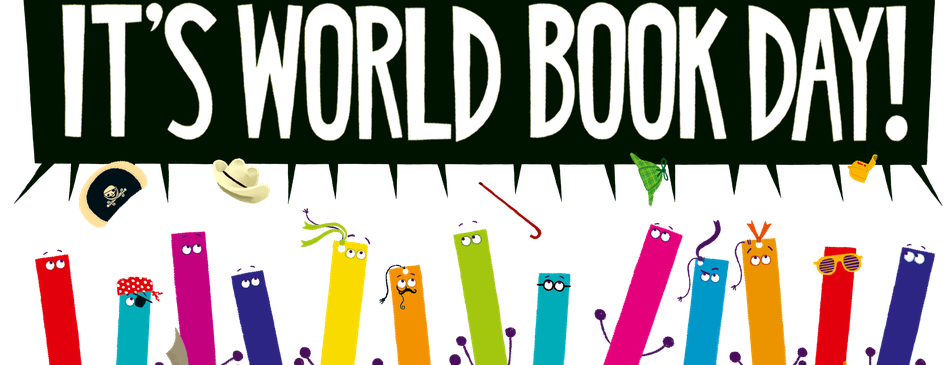
World Book Day Assembly
Scroll down the the ‘Learning Project’ for more information on a LIVE session at 10.30am
Phonics task
Look for all of the oi and oy spellings in this:
(click on the picture to go to the website and see if you found them all!)
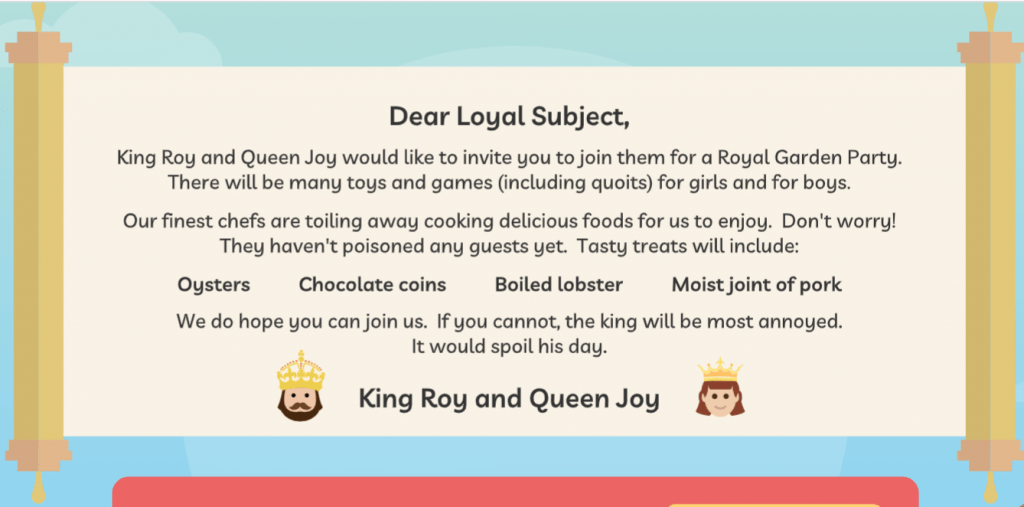
Find and write the ‘oy’ words
(download the PDFs and choose the correct level of challenge for your child)
Maths task
Play ‘pop ‘n’ drop’ and practice making 100 in 10s

or
Play ‘smoothie maths’ first playing facts to make 10, then facts to make 100.. noticing the link between the two

Have a go at finishing the challenges we started in Maths yesterday. Remember to use the numberline or representations of 10 (like 10p coins) to help you
(If you want to print them out the download is under the pictures)


Writing task
Create your own ‘Super Villain’
Draw and label your super villain. Do they have powers? Weapons? A sidekick? A costume?

or
Play ‘Name that Story’ with your family with these printable cards
Reading task
or
Access the Beano online here:
Learning Project
live at 10.30am
or

Take part in a draw-along video with an illustrator like Draw With Rob.
Wednesday 3rd March
P.E.
KS1 Fundamentals of Movement – Locomotion & Stability
Or
Jack and the beanstalk yoga!
Phonics task
Play ‘Tricky Word Trucks’ making sure you choose the ‘phase 4 tricky words’ (as shown below)
Have a go at spelling some of the words on the activity below then looking for them on the word search!
Maths task

Have a go at doing some of the activities in this number bond activity booklet
Play this game that we introduced in maths yesterday!
Writing task
fact poster challenge
ideas and facts here – creating fact-filled posters
Reading task
Listen to the story ‘We Love You Hugless Douglas’
Locate places from the story on a map. Draw the places from the story:
Hill
Home
Barr Barr Bush
Tall Tree Forest
The Old Barn
and the Tickly Grass
Post a photo of your map on tapestry when you are finished.
Learning Project
Because this year we won’t be able to dress up as usual all together we’d like you to decorate an item at home (however you like!), as long as it relates to a book!
You could choose a paper plate, potato, pebble, wooden spoon, shoe box, lolly stick, paper lantern, pillowcase, t-shirt, poster – the options are endless!
have a look at the photos below that might inspire you




D.T. & Music activity
(Related to ‘we are scientists’ topic)
Design your own musical instrument! Draw it first (use the design sheet below) and show us on Tapestry.
Get some ideas from here:
5 instruments children can make
Tuesday 2nd March
Phonics task
Watch this short Mr Thorne clip about the oi/oy sound
Maths task
Watch the story and pause on each page to look for the maths in the illustrations.
This could be:
- counting different objects and characters
- looking for shapes and patterns
- seeing if there are any numerals or number names in the text
Play this game
Set the slider on the far left to ‘steps of 10’ and alternate between doing it forwards and backwards (slider on the right)
Writing task
Make a ‘courage jar’


Reading task
How to create as storybook theater
or
Re-design the cover of your favourite story book
(you can use the template below if you like)

or
Watch this video of Author Ellie Sandall and join in with the activities
Learning Project
Create your own story in a box (you’ll need a box!)
Build a story den at home for your family to share stories in – send us photos on Tapestry when it’s done!
Here are some photos that might give you ideas:
Monday 1st March
Assembly
Phonics task

Maths task
Visit this BBC bitesize page which reviews some of the maths learning we’ve done on counting in tens.
Visit this website and choose one of the activity sheets that will be appropriate for your child to complete (as you scroll down, they get progressively more challenging)
Play Shark Numbers
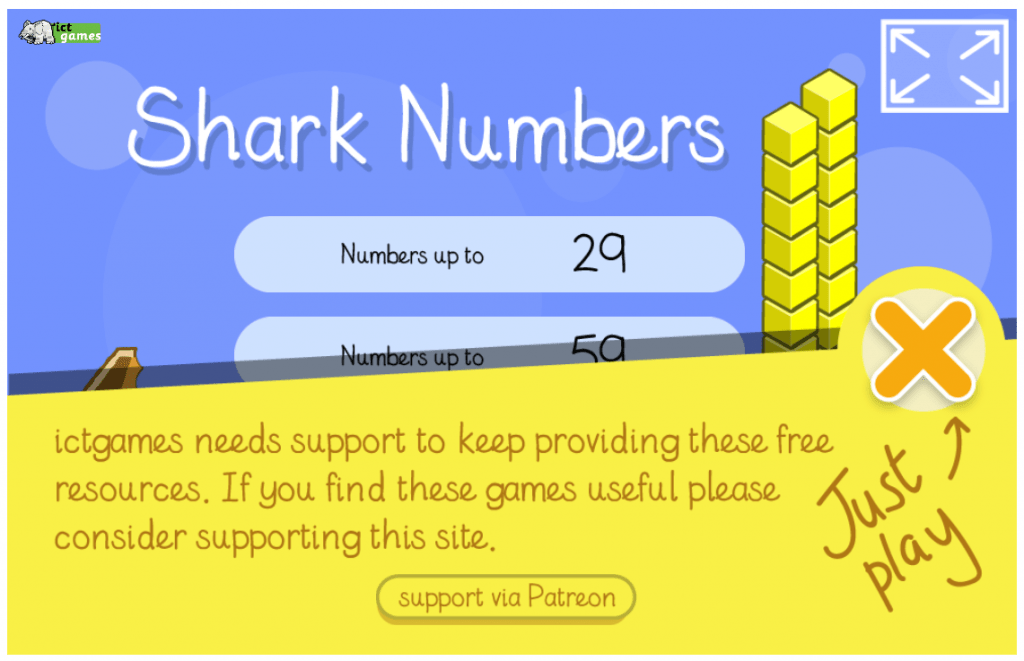
Writing task

Think of your favourite Nursery Rhyme or Fairytale. Have you got a copy of the book at your house? Read it then make a story board (using the template below if you wish)
Here are a few alternatives to the traditional tales you might already know…
Reading task
Will starts with reading the book and pointing out various details within the pictures. The tasks that follow include designing a fairytale character with a twist and deciding where that character lives. Will ends the video answering some of the most popular questions he gets asked by children.
Learning Project
Choose and sign up to one (or more!) of the Scholastic events that are being held for World Book Day this week.

Comfy reading
Submit a photo (to Tapestry, and to rbarnes@mayfield.cambs.sch.uk) of you reading in your favourite/comfiest place in your house or garden with your favourite book. Maybe you could even write a little bit about why it’s your favourite and why someone else should read it!

Book in a jar
This is to do throughout the week. When it is complete post a photo on Tapestry and we will make time to look at them all at the end of phonics each day.
Our topic this term is…
We Are Scientists!

This week our learning focus will be Mary Anning.

Friday 26th February

Watch the clips below all about Purim!
Assembly
Phonics & writing task
Earlier this week we learnt about the rhyme said to be written about Mary Anning

Investigate tongue twisters! (PowerPoint below) Can you write a silly sentence using as many words beginning with the same letter or sound as you can?
Then record yourself saying it at least 3 times as fast as you can to put onto Tapestry. Just like “she sells seashells..”
Maths task
Practice counting in 10’s wherever you go –around your house, up the stairs, to the shops, on the swings… everywhere! Write them down too.
What do they all end in?
Spell them.
Remember the stem sentence ‘one ten is the same as ten ones’.
We have been counting in tens (in two different ways: ‘zero, ten, twenty, thirty, forty…’ and ‘no tens, one ten, two tens, three tens, four tens…’). Please practice this at home.
Please check that your child is saying 40 as forty, not fourteen etc.
It is important for children to know the sequence of numbers. You could also ask your child to count out 100 pieces of pasta by making groups of ten.
The Numberblocks episodes focused on tens (like the one below are also very good)
Reading task

(may need adult support to read complex words)
Write down some fossil facts after taking the quiz. Try to use ‘and’ in your sentences.
Learning Project
Download the PowerPoint to find out more about the different types of fossils that can be found.
Then watch this video about fossil formation.
Can you create your own fossil drawing based on all you’ve learnt this week?
Thursday 25th February
Phonics task
Ow/ou sound game
Maths task
Play 10 more/10 less hundred hunt
Writing task
Inventions!
If you’re interested in inventors you can watch this clip before or after the task.
Reading task

work through this short PowerPoint
Learning Project
Make your own volcano!
or
Mindful Activity
Colour-in the words and talk about what they mean. How could you show that? or What could you do?
Wednesday 24th February
P.E.
KS1 Fundamentals of Movement: Locomotion & Stability
and/or

Phonics task

Maths task
After our Zoom session have a go at this game
Reading task
Re-watch the story of Mary Anning then re-order the pictures. Can you video yourself telling the story (or write it down if you prefer), then put on Tapestry!
Learning Project
Watch ‘how are fossils made’ then make your own using one of the recipes below!
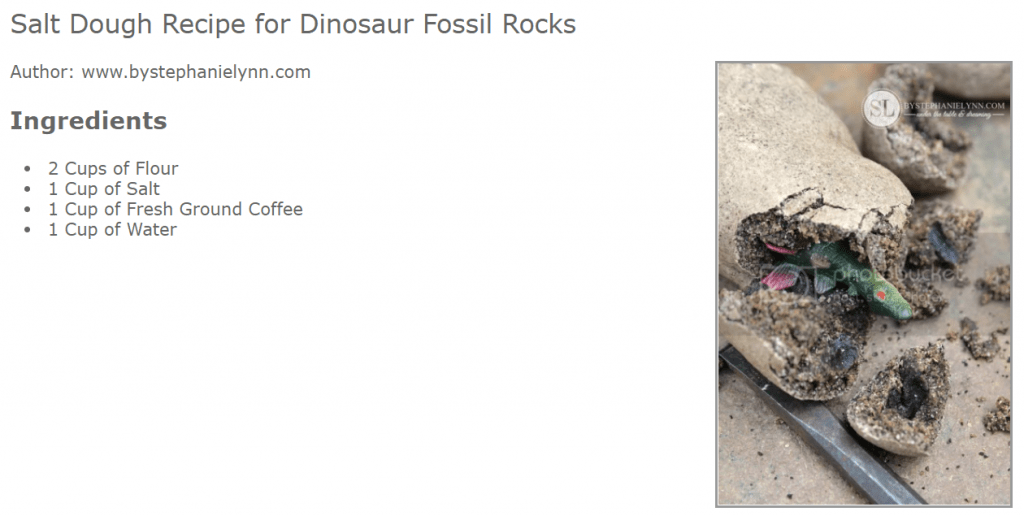


Writing task
Write a sentence to describe what a fossil is, then draw pictures to show the process of how a fossil is made
Tuesday 23rd February
Phonics task
‘ou’ words activity – choose the sheet which best suits your child’s ability. When complete can they choose 3 words from the activity and write a sentence for each? Remember a sentence starts with a capital letter, and it ends will a full stop.
Reading task
Access Bug Club or Oxford Owl
Listen and read along to ‘What is Science’
Maths tasks
Complete this activity (or draw your own!)
*Challenge*
This one is pretty tricky – please only provide your child with this if they have a very good understanding of counting in tens forwards and backwards.
Play the shark numbers game below

Learning Project
Fossils!
Have a think about the questions you had for Mary Anning yesterday… Watch this video and see if any of them are answered!
See if you can match up these dinosaurs with their fossils

Now it’s time to make…

Now have a think about the different types of dinosaurs and how what they ate, changed their poo!
Monday 22nd February
Assembly
Phonics task
After our Zoom phonics, have a go at this alternative spellings of ‘ow’ activity.
Maths task
This week in maths we’re continuing learning about counting forwards and backwards in 10s. Try to complete these dot-to-dot dinosaurs saying the number names as your go.
Writing task

This week we are going to be learning all about the life and work of Mary Anning.
Look at this PowerPoint and write down what you would like to ask her (directions are on the PowerPoint slide)
Learning Project
What is Science?
Watch this video:
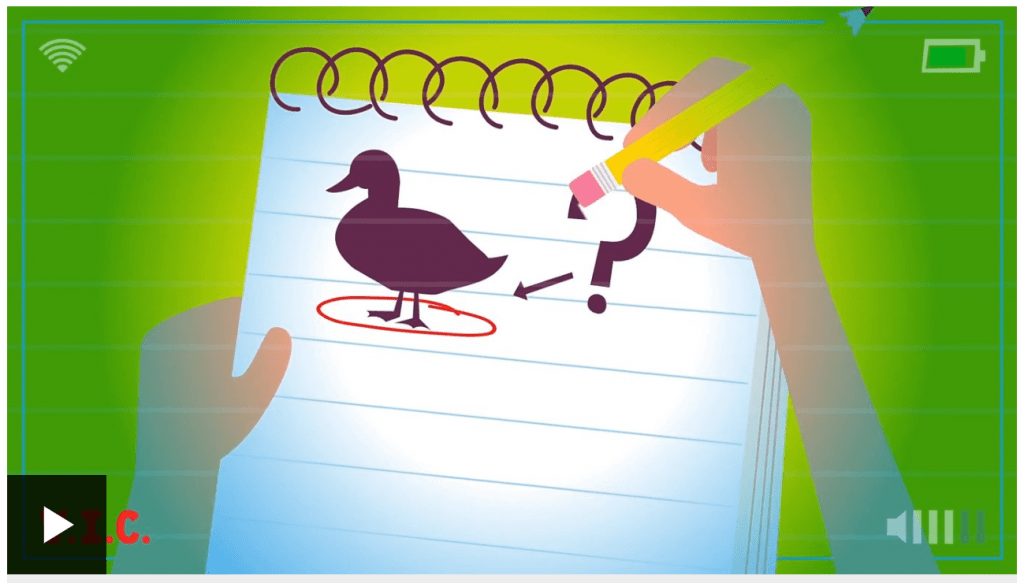
You’ve probably heard the word ‘curiosities’ a few times today… find out more about them watching this slideshow then complete the art task
Friday 12th February
Happy Chinese New Year!
Take a look at the ‘Learning Project’ section today for Chinese New Year based activities!
Assembly
Phonics task
Dinosaur Bingo!
Download the dinosaur phonics cards below and choose either a few to print out (however many people you have to play at home) or draw your own to play bingo!

After our phonics Zoom practice some alternative spellings of ‘n’ with this game
Maths task
Here is the video we used yesterday in maths, incase you want to watch the whole thing!
Maybe you could make your own number line in 10s if you have some paper cups?
Have a go at filling in the missing tens in this winter activity. If you’d like an extra challenge you could edit it so you start at 100 and go up from there…

Have a go at this one, or make your own ‘dinosaurs and ladders game to play with your family

Reading task
Guided reading – Friday
The Good Dinosaur

Learning Project

Make a 3D dinosaur model using recycling! This could be a project for over half-term when you’ve collected some of the boxes/tubes/cardboard that you need/
Chinese New Year!
Learn all about the year of the ox with this ‘read to me’ PowerPoint
Make a cherry blossom branch for Chinese New Year

You can draw your own branch or print out and colour in this one…

Chinese New Year Maths challenge – *warning* it’s very tricky!
Thursday 11th February
P.E.
Learn the ‘Do the Dino’ dance
or
The Dinosaur stomp

…then choose one other activity from the P.E. and Outdoors section of the blog.
Writing task

If you haven’t done it yet, draw a picture or make a card for someone at school that you haven’t seen for a while.
What could you ask them? What could you tell them? What are you looking forward to doing with them when we’re back at school?
Post your work on Tapestry and we’ll tag the person it’s for in the post so they can see it!
(Don’t forget the grown-ups! We like receiving messages from you too!)
Phonics task
Practice the days of the week with Roy the Zebra then see if you can unscramble the days in the activity below
Reading task
Read ‘Dinosaurs’ on Bug Club (it has been allocated to everyone)
Watch The Worrysaurus by Rachel Bright & Chris Chatterton
Maths task

Make a dinosaur with 2D shapes (you can cut up your own with paper or carboard, use washable things from around the house to print with paint, or draw around objects with the correct shaped faces!)
Play ‘spot the coins’ – focusing on 1p, 2p, 5p and 10p
Learning Project
Pasta skeletons
Either use a picture of a skeleton or use a plain piece of card (an old cardboard box would be perfect!) to design your own dinosaur skeleton using pasta and PVA glue (flour and water mixed to make a paste works as a replacement glue).
This website has lots of pictures of dinosaur skeletons to help you decide which one you’d like to make.
Wednesday 10th February
Writing task

Make your own ‘Top Trump Cards’ or fact files on Dinosaurs to use as a game to play with your family
The Dinosaur ‘Guess Who’ game, or the information matching game below might give you some inspiration
Phonics task
Complete the ‘oo’ alternative spellings activity

…then play the games set on Bug Club that practice the alternative spellings we have been working on over the past weeks
Reading task
Access the guided reading slides below

Then learn all about some other extinct animals!
Maths task
Play this coins game to become more familiar with counting coins under 10p (1p, 2p, 5p, 10p) – choose the ‘counting’ option and have a play!

Make salt-dough to print dinosaur footprints/fossils or whatever you have around that could be dinosaur themed

Learning Project
Create a dinosaur shadow painting! If you have a dinosaur toy (and if the sun is shining) you could draw around its shadow to to create your dino, then use water colours or watered down paint to create a sunset for the background!
Extras
Choose another episode of Andy’s Dinosaur Adventures to watch!
(click on the picture below)
Tuesday 9th February
Writing task

Look at the two PowerPoints above (they both have ‘read to me’ buttons so children can access them independently) then draw a picture or make a poster showing the possible causes of extinction.
Maths tasks

Fill in this interactive calendar – how many days is it until Chinese New Year?
practice some of the things we did in Maths yesterday, remembering…

and that when

Play on this interactive board and see how you can show these statements
Make a dinosaur headdress
Watch the clip below, and pause whenever you need to. Your headdress can be whatever colour you like, and have as many spines and you like! Can you make a repeating pattern when you decorate it?
Learning Project
Painted hand dinosaurs prints
You can name your hand dinosaur after yourself!
Andy’s Dinosaur Adventures
Choose an episode to watch by clicking on the picture above!
Monday 8th February
Assembly
Writing task
Find a big piece of paper or cardboard (we’ll be adding to this task throughout the week). Draw and write any information you know about endangered animals. Do you know the names of any and what they look like? Where do they live?
The photo below will give you a few clues

Reading task
Access the guided reading slides below

Maths Task
Make your own rainbow number bonds to display and practice at home


Phonics task
Read the tricky word dinosaur (if you have a printer you can colour them in if you can red them!)

Learning Project
Endangered animals – Make a ‘Save an animal’ poster with pictures and facts about one of the endangered animals you have learnt about
Friday 5th February
Friday assembly
Maths Task
Have a look in the garden or take a local walk to look for leaves. Collect all of your favourites then see if you can identify what they are then organise them into groups. How many do you have of each? How many are there altogether? Take photos of different representations e.g. first, then and now maths stories, part-whole diagrams, bar model. You could even stick them on paper to show us!

Reading task
Listen to the story ‘Library Lion’
Did you like the story? Why?
Who is your favourite character? Why?
What might happen next?
Desert Habitats
Download this PowerPoint to find out more about hot desert habitats and cold desert habitats!
Writing task
Make a card or write a letter to one of your friends from school that you haven’t see in a long time (then post it on Tapestry so we can tag them, and they’ll be able to see it!)
Think about what you would like to tell them.
What can you ask them?
I wonder how they’re feeling? What could you say that might make them feel happy?

Learning Project
Animals
The project this week aims to provide opportunities for your child to learn more about key animals they are interested in. Learning may focus on exploring the physical aspects of an animal, their habitat, categorising animals etc.
Find out about:
What are mammals?
What are amphibians?
What are birds?
What are fish? What are reptiles?
What are insects?
Check out this video on Twinkl Go about animal classes
using pin code: PJ7650
Then you could play the ‘grouping animal classes game’ or download the interactive animal groups activity below
Create a mask:
Using different materials around the house, create a mask of your favourite animal. Think about the colours and shape. Can you add different textures to the mask to make it look more realistic? Why do you think your animal has markings like it does? Is it to do with camouflage? You could play the ‘camouflage jigsaw game on Twinkl Go access using pin code: PJ7650
What do animals eat?
Download the interactive PowerPoint below and learn about carnivores, herbivores and omnivores (the PowerPoint has a ‘read to me’ function on each page). Then access this lesson using pin code: PJ7650 at Twinkl Go to practice grouping animal diets.
Animal grouping:
Get your child to group animals into two columns. Identifying animals that can fly and cannot fly. What do animals eat? Scientists group animals into three different groups according to what animals eat. These groups are carnivores, herbivores and omnivores. Carnivores eat other animals, herbivores eat plant material including fruit, leaves, vegetables, omnivores eat a mixture of meat and plant material. (Animals that eat other animals are called carnivores. Animals that eat plants are called herbivores. Animals that eat both plants and other animals are called omnivores)
Nocturnal animals:
What do you think this word means? Watch this clip and talk about the animals you see. Have you seen any of these animals in real life? How could you describe them? Nocturnal animals are more active at night than during the day, play this game to explore further. These animals sleep during the day, often in a burrow or den. They have special adaptations that help them survive in the dark. Over millions of years, these animals have developed traits that help them survive in the darkness. Nocturnal animals may have larger ears to hear better, bigger eyes to see better, and body parts that glow in the night. Create your own big-eyed nocturnal animal art.
Planet Earth II:
watch the Planet Earth II episode – deserts and then have a go at completing the quiz afterwards. Now that you’ve found out so much about desert landscapes, how about creating your own!? You could draw, paint, papier mache, junk model… whatever you have available. There are some activity ideas here (click on the photo to take you to the website):
Thursday 4th February
Reading task
Take a look at one of the eBooks below on the Oxford Owl website (you will need to have set up a free account to access them)

Maths task
Practise counting in 2s, 5s and 10s. There is a fun song below and these games that can help:
Writing task
Write descriptive sentences for some of the desert animals you see in the illustration from ‘walking through the jungle’.
Have you learnt about any other desert animals that aren’t in the illustration? Have a go at drawing one in the style of the book.

Describe similarities and differences between animals in different classes. The printable posters below might give you a few ideas!
Carnivores, Herbivores and Omnivores!
Download this talking PowerPoint to find out more about which sets animals are organised into:
Phonics task
This is an extra challenge – complete this activity sheet *after* the phonics Zoom session
Wednesday 3rd February
P.E. tasks
Choose from P.E. with Joe Wicks, the ‘P.E. at home’ session or the PowerPoint below with invasion game challenges (that the whole school has been set!)
Reading Task
Listen to the recording below (or mute the video and read along yourselves!). Can you find adjectives in the book used to describe the animals? If you have any animal books at home you can have a look in them to find adjectives too.
You can also have a go at this ‘eye spy animal picture’ and see if you can find all of the different animals. Can you name them all?
Maths task
Use this number generator to pick a number between 2 and 20 then make a poster of all of the different ways to make this number using addition, subtraction, multiplication etc.
Writing task
Create a fact file about your favourite desert animal or research a desert animal of your choice and explore the vocabulary required to describe them.

National Story Telling Week
Tuesday 2nd February
Reading Task
Read common exception words and time how long it takes for you to read them all. Can you beat your score by the end of the week? Use this game on Phonics Play and work up the phases (login info is under the reading tab at the top of the page).
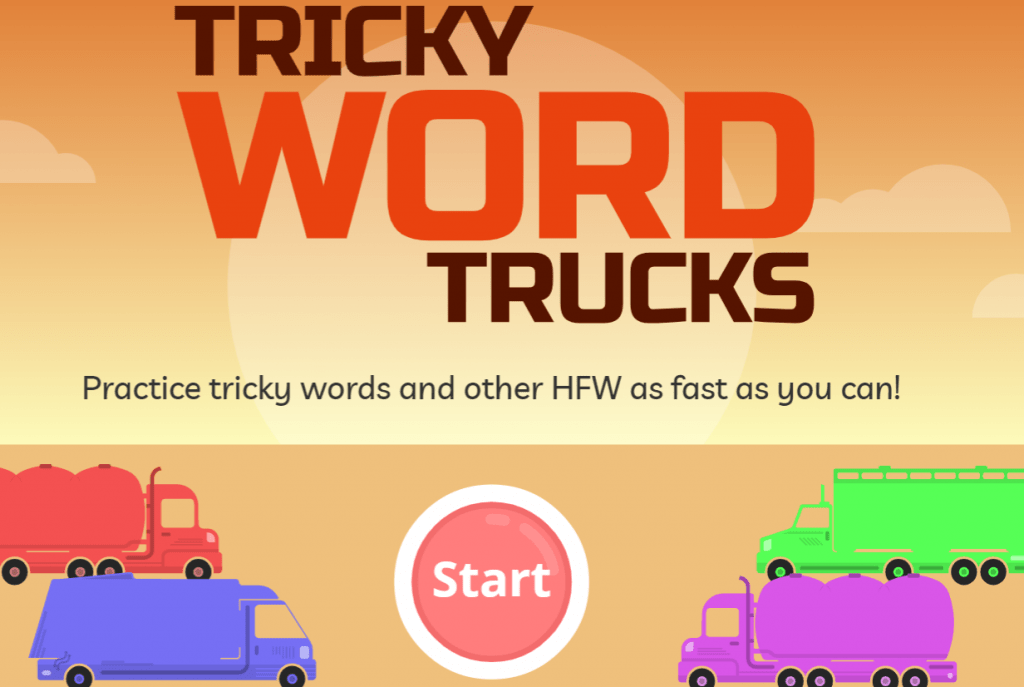
Alternatively, you could write the words on post-it notes or pieces of paper and play a game of find the word around your house!
Writing Task
Have another go at making an Animal Alphabet (thinking of an animal for each letter of the alphabet). If you’d like an extra challenge think of an alliterative adjective to write before it e.g. Enormous Elephant!
Below is a sheet you can fill in if you like
If you’re finding it tricky, have a look at this painting below!

Maths task

Work on RMEasimaths – your child will have an individual login to access this.
Phonics task
Choose a game to play from below to practice your phonics skills:
- Phonics play
- Top Marks
- Spelling
- Spell the days of the week using this tricky snowflake game
- Spell common exception words using the ‘train your brain’ game on Phonics Play
- Spelling City
Below is a activity sheet to practice the alternative spellings of the ‘oa’ sound
Monday 1st February
Monday assembly
Reading task

Read along to the eBook ‘In the Desert’ (login details are found under the ‘reading’ tab at the top of the page) then watch this What is a desert habitat? clip and have a go at the questions afterwards
Phonics task
Choose a game to play from below to practice your phonics skills:
- Phonics play
- Top Marks
- Spelling
- Spell the days of the week using this tricky snowflake game
- Spell common exception words using the ‘train your brain’ game on Phonics Play
- Spelling City
Below is a activity sheet to practice the alternative spellings of the ‘oa’ sound taught in phonics today
Writing task
Download the ‘Deserts’ PowerPoint below (it has ‘read to me’ buttons on each page, so your child can access it independently) then write a set of questions about desert animals you would like to find out more about this week

Maths task
Play on Number Fact Families – find the addition and subtraction fact families for numbers up to 20, 50 or 100.
Practice addition and subtraction within 20 with our quiz from Friday Access this lesson using pin code: PJ3954
at Twinkl Go
Friday 29th January
Reading task

Follow the story When I Coloured in the World. What would your child change about the world? Task them with drawing a picture of their ideal world and maybe even labelling it!
Phonics task
Recognise vowel and consonant digraphs and practice blending by playing this game or learn about adding suffixes by playing this game.
Alternatively log on to Bug Club to play your phonics games on there.
Writing task

Use this wonderful resource on the story of ‘The Black Hat’
or
your child could write their own version of a section of the poem ‘When I Coloured in the World‘

Maths task
Encourage your child to practise different ways of subtracting by playing these different activities.
Choose a total that suits your child’s ability, and ensure you have resources available for them to use to work out their answers.

Don’t miss out on getting involved with the Big Garden Birdwatch this weekend! All of the resources are available on the tab here
Learning Project
to be done throughout the week
The project this week aims to provide opportunities for your child to learn more about countries and cities around the world. Learning may focus on different cultures and traditions, famous landmarks, food and clothing.
- Flags- Look at flags from around the world with your child. Discuss which are their favourites and why? Ask your child to recreate their favourite; this could be through drawing, collaging etc. Can they place the flag on a map? There are some quizzes that your child can have a go at here. Can they create their own quiz about the UK?
- Dance Around the World- Watch the following dances: Diwali Stick Dance, Maypole Dancing and Spanish Flamenco Dancing. Encourage your child to have a go at some of the moves used in these videos. Record the dances and ask your child to evaluate what they did well and what they could do even better when watching them back. Can your child recreate one of the costumes using items from their wardrobe? Perform the dance to a family member!
- Food Tasting Fun- Find some different fruits from around the world. This could include: mangos, kiwis, pineapples, bananas. Encourage your child to try them and have a discussion about which ones they liked and which ones they did not like. Cut the fruits open and task your child with sketching the inside of each fruit. Remind them to look closely at the patterns and shapes.
- Where in the World? –Have a discussion with your child about your own family heritage. Discuss with them your traditions and where your family originates from. This may be where you live now or it could be somewhere completely different. Ask your child to create a poster or PowerPoint all about their own family. Can they include a map identifying the country they’re from? Share these on Tapestry and let us know if we can post photos of the blog so children can compare families.
- Speak the Language- There are lots of different ways to say hello around the world. Learn how to say hello in Spanish, French, Mandarin, German, Arabic and Italian with your child using Google Translate. Practise writing hello using the colours of the flag for each country.
- River Art- draw/paint/collage a river scene with birds, fish and animals. Look at these famous artists’ river pictures below for some inspiration!
London Parliament in Winter by Claude Monet
The Hay Wain by John Constable
The Seine At Asnieres by Pierre Auguste RenoirMaybe you could try including one of these river birds in preparation for the Big Bird Watch this weekend.
STEM Learning Opportunities
Engineering Around the World – World’s Largest Steel Structure
- The Bird’s Nest is the world’s largest steel structure and was built in China for the 2008 Olympic Games. It is made out of 26 miles of steel.
- Use strips of paper, card or wool to create your own bird nest style building.
Thursday 28th January
| Reading Tasks |
| Use an atlas or a map and locate some of the biggest rivers in the UK. This interactive map is great (but a bit fiddly) and below this table there is a pdf map and link to a labelling activity. This map has beautiful illustrations. Can your child then locate a river in a different country? What is different about the environment it travels through? What is the same? The Nat Geo Kids website has a great fact file about rivers or there is a Twinkl fact file here. Read along to ‘Brilliant Bridges’ Username: parents@harpercollins.co.uk Password: Parents!21 |
| Phonics Tasks |
| Can your child write about things you would find in, on and around a river? Can they add an adjective before each that starts with the same letter? e.g. ‘A bobbing boat’(you could use the illustrations from ‘Walking Through the Jungle’ as inspiration). There is a downloadable writing template below if you would like it. |

| Writing Tasks |
| Your child could write a letter to a friend or a family member who lives in a different part of the world – describe where they live and describe school. Think of questions to ask about where they live and about their school. |

| Maths Tasks- Subtraction |
| Look at flags from around the world either in books or on the internet. Ask your child to list any shapes they see and name the properties of the shapes they find. Talk about symmetry and look to see which flags are symmetrical (it’s a fun opportunity to use a small mirror to check!) |
Build your own bridge challenge!
Once you’ve done that…
Wednesday 27th January
| Reading Tasks | Phonics Tasks |
| Help your child to look through cookery books for a recipe originating from another country. Ask them to use decoding skills (sounding out the words) to read some of the ingredients. Why not make it, if you have the ingredients!?If you don’t have a cookery book to hand, there are lots of websites with child-friendly recipes like this one or this one. | ‘Where’, ‘would’, ‘people’, ‘clothes’ and ‘water’ are some of the words that children in KS1 need to be able to spell. Can your child use these to write sentences about things people do around the world in, on and near rivers. Play this snowball game to practice the alternative spellings of the ‘igh’ sound in worlds |
| Writing Tasks | Maths Tasks- Subtraction |
| Wednesday-Your child could write a set of instructions for a meal they would love to share with family and friends (which could be inspired by the reading task above!) They can use illustrations too. | Wednesday- Get your child to write a subtraction number bond to or within 10 -e.g. 9 – 4 = 5 or 7 – 2 = 5. Can they use these facts to find out the subtraction facts up to 100? E.g. 90 – 40 = 50 and 70 – 20 = 50. To help with this you could use 1p coins for the numbers below 10, and then 10p coins to represent the 10s to make 100! There’s an online game here to play if your child in interested in money |
P.E.
Choose between P.E. with Joe, 5-a-day-fitness or if you can, get outside – running, jumping, throwing, catching, dodging, climbing, dancing – all things we need to practice!
Don’t forget to check the Phonics & Writing and Maths tabs for additional resources. Things uploaded this week are marked *NEW*
Tuesday 26th January
| Reading Tasks | Phonics Tasks |
| Follow the story ‘A River’ by Marc Martin either read on YouTube or by Ms Campbell with your child. What makes the river special? Using the story, your child can make a list. | Practise spelling days of the week using different materials in the house. You could cut up magazines, use magnetic letters, organise pebbles or sticks outside, print them in playdough… the options are endless! |
| Writing Tasks | Maths Tasks- Subtraction |
| Rivers are used to transport fresh produce around the world. Draw a picture of 10 different pieces of fruit or vegetables from around the world and label them using adjectives. As a challenge, try using a comma between the adjectives, too e.g. ‘fresh, juicy pineapple’. | Give your child a number between 1 and 50 and ask them to list how many ways they could make the number using subtraction. They could show their working in many different ways like on ten frames, number lines, part-whole diagrams |
Monday 25th January
Here is the link to assembly this morning!
| Reading Tasks | Phonics Tasks |
| Ask your child to look through their books and identify any places from around the world by looking at the illustrations. They could also look through a magazine or newspaper to see what they can find. Are the places similar to Cambridge, or different? How? | This week in phonics we are focusing on alternative spellings for the ‘igh’ sound. Walk around your home and see how many different things you can think of with the ‘igh’ sound e.g. switch off/on the light, tell the time etc. Alternatively, play ‘eye spy’ with this picture and look for all of the things with the ‘igh’ sound in them. |
| Writing Tasks | Maths Tasks- Subtraction |
| This week’s focus in our story is rivers! Take a look closely at the pages below from ‘Walking through the Jungle’. What do you see? Write it down using full sentences e.g. “I can see a hovering dragonfly” Which animals do you not know the names of? Where might you be able to find out? | Get your child to have a go at the online game for subtraction facts up to 20. or Go on a number hunt (either around the house or on a local walk) and every time you see a number say it then say one/ten/one hundred more/less than it e.g. |


Friday 22nd January



| Maths task | Reading task |
| Practice ‘instant recall’ facts to 10 or 20. This game can help or for a more active game work in a pair to “make 10”, “make 20” or “make 100”. The first person thinks of a number to 10/20/100 then jumps that number. The partner must jump the appropriate number to “make 10/20/100″ (see the diagrams below for more information) | Go for a local walk, or have a look at the photos above this table. which digraphs (2 letters, one sound) and trigraphs (3 letters, one sound) can you see? Are there any alternative spellings that we’ve learnt over the past two weeks? (ai, ay, a, a_e, eigh, ey) (ee, e, ey, y, ea, ie) |



| Phonics/spelling task | Writing task |
| Daily phonics -Use Bug Club to help your child to practice their sounds and blend words. If you’re not sure of your child’s login details please contact Miss Joyce. Check the phonics section of the blog and choose an activity for your child to complete. If you’ve ran out, there are loads more resources on Twinkl that you can download. | It has been raining a lot recently! Watch this video. Can you remember how to make the ‘rain cloud in the jar’? Write a set of instructions and then find out if you have what you need at your house to make your own! |
P.E. with Joe – have a go at 9am live, or watch back later!
Learning Project – to be done throughout the week
Environment
The project this week aims to provide opportunities for your child to learn more about the environment. Learning may focus on changes to different environments, the impact of humans on environments, climate change etc.
Create a chart to record the weather. Label the chart with days of the week and record the weather at different points in the day. Can you write down key words and take a photograph of the sky. Does it change in the week?
Watch the weather report on T.V. How do they describe the weather? What do you notice about the map? Can you find Birmingham on the map? Have they got symbols when they are talking about the weather?
Weather reporter Pick a day that you would like to present as a weather reporter. Can you create some symbols to use when you are talking about the weather? Can you talk about the weather in your local area and maybe compare to another place in the UK, the Arctic or the rainforest?
Create a weather wreath Using different materials can your child design a weather wreath? Encourage them to think about the symbols used in your weather report.
What a load of rubbish! With your child look at the rubbish as a family you
throw out. Do you help to recycle? How do you sort these into rubbish and into recycling? Look at the range of items and group them into different material groups. Talk to a family member about how certain groups are plastics and can also look and feel different to each other. Could you design a new way to help recycle more items? Ideas
Beat the clock Can you sort items into the correct recycling and waste bins? Play
Switch it off Ask your child to take a look at all the electrical devices in your house. Are they all plugged in? Do they need to be plugged in? How could they create a poster to place around the house to help remind people to switch it off once they have finished.
Save Electricity Recycle Paper, Conserve water. What could you include on these? Where could you place these in the house? Can you talk to your family about the posters and how you could help the planet?
Listen to a song about things we can do to help to save the planet.
Write and draw! Ask your child to choose one thing they could do to help the environment in school. Get them to make a poster to encourage people to do it! Think about the classroom and also the school.
Thursday 21st January
| Maths task | Reading task |
| Choose a number between 0-100. Make a poster showing how many different ways can you represent this number? Can you use part-whole models, bar models and tens and ones, tallying, a clock… to show the different ways? (see below for an example of representations of 17) | Listen to Newsround (you don’t need to watch the whole thing!) and discuss what has been happening in the world this week. What new things have you found out? If you enjoyed it, why not try making your own newspaper! Have a go at reading this non-fiction book about wolves, too. |

| Phonics/spelling task | Writing task |
| Daily phonics -Use Bug Club to help your child to practice their sounds and blend words. If you’re not sure of your child’s login details please contact Miss Joyce. Check the phonics section of the blog and choose an activity for your child to complete. If you’ve ran out, there are loads more resources on Twinkl that you can download. | Watch the weather report (storm Christoph is fairly exciting at the moment!), scroll down until you get to the ‘BBC Look East Weather’ then, write your own weather report. Can you use any adjectives (describing words)? If you haven’t had a go yet, see if you can video record your report using a phone or tablet and upload it to Tapestry! |

…then have a go at matching the instruments to the characters (and drawing them, too!)
Have a go at re-telling the story on your own by drawing the pictures to match the text
Why not listen to one of the Year 1 grown ups reading you a story, too!
Wednesday 20th January
| Maths task | Reading task |
| Practise telling the time. This could be done through this game (scroll down the screen to access the game) or this online resource. Is there anything you do throughout the day that happens on the hour, or half past? (phonics and maths times are a good place to start!) The challenge is to read to the hour and half hour. | Find and read a book aloud about materials. (Everyone has been allocated ‘This Floats, that sinks’ on Bug Club). Discuss the materials you find and place them in alphabetical order. Are there any more materials in this video that you didn’t see? |
There are some BBC clips about ‘materials’ here, if your child would like to find out more
| Phonics/spelling task | Writing task |
| Daily phonics -Use Bug Club to access games that practice the alternative spellings of ‘ee’ Check the phonics section of the blog and choose an activity for your child to complete. | Can you label the plants in your garden or in the house? How often do they need water? Do they need much sunlight? |
Tuesday 19th January
| Maths task | Reading task |
| Practise counting 1 more/less and 10 more/less. This game could support this. Look out of your window or stand in your front garden and count how many cars go past. What is the most popular colour that passes? What is the least popular colour that passes? Can you record it using a tally? | Read a story that has a woodland in. If you haven’t got any at home here are a few links ‘Tidy’ by Emily Gravett (this one links really nicely with some of the environmental themes this week), ‘A House in the Woods’ by Inga Moore, ‘The Wild Woods’ by Simon James Remember… If anyone would like to be a ‘Secret Reader’ (grown-up or child!), record yourself and send the video to Miss Joyce and it’ll be posted on the story page! |
| Phonics/spelling task | Writing task |
| Daily phonics -Use Bug Club to access games that practice the alternative spellings of ‘ee’ Check the phonics section of the blog and choose an activity for your child to complete. | Watch (0:36-0:53 seconds) or take a look below at the pages of ‘Walking Through the Jungle’ that focus on the mountains. What animals can you see? Write as many full sentences as you can, using describing words if possible e.g. ‘I can see a swooping eagle!’ If you’d like to find out more about mountain animals like the mountain lion have a look on NatGeo kids. |


Monday 18th January
| Maths task | Reading task |
| Working on RMEasiMaths – your child will have an individual login to access this – please contact Miss Joyce if you do not have this. | Listen to one of these information videos about caring for the environment. clip 1 clip 2 Discuss with your child after. |
| Phonics/spelling task | Writing task |
| Daily phonics -Use Bug Club to help your child to practice their sounds and blend words. If you’re not sure of your child’s login details please contact Miss Joyce. | Watch Maddie’s ‘do you know?’ about bin lorries and recycling then write a ‘thank you’ letter to the people who collect your rubbish and recycling. What could you include in your letter? Can you think of any questions you could ask about recycling or where the rubbish goes? |
Friday 15th January
P.E. with Joe live at 9am
Your child may be interested in watching Sunday’s episode of ‘A Perfect Planet’ which covers from the frozen poles to the searing deserts. It shows how animals have come up with strategies to survive the uneven amounts of sunlight that fall on our planet.
| Reading task | Phonics task |
| Read along with ‘There’s a Hole in the Bottom of the Sea’ or listen to ‘How the Whale got his Throat’. Ask your child to retell one story by drawing a comic strip of the events. | Ask your child to write the alphabet using capital letters. Challenge your child to write the lowercase letters too. |
| Writing task | Maths task – time |
| Visit the Literacy Shed for this wonderful resource on The Lighthouse. Or, your child could design a beach safety poster. What tips would they give beach-goers for staying safe at the seaside? | Ask your child to survey the family about their favourite sea creature (choose from 5). Represent the results using a tally chart or a pictogram. Which sea creature was the most popular? Which was the least popular? |
Today there are two really exciting live lessons happening! One at a ZOO, and one at an AQUARIUM!
Exploring Habitats – 11am
Paignton Zoo will be presenting a short lesson from the zoo! The lesson will be designed for KS2 pupils exploring habitats, and the animals that live in them – but all children are of course welcome to watch. Including: What is a habitat? How could we describe the habitats? Which habitats would the zoo animals inhabit in the wild, and how would that affect the way they live?
The video lesson will be shared via Teams (anyone with or without Teams will be able to watch) and they will share the viewing link with you here!
Deep Science – 1-2pm live on their YouTube channel
The aquarium schools team will be using aquarium exhibits and their AquaLab to explore the science behind the animated ocean exploration tv series ‘The Deep’ (CBBC @12pm on weekdays during lockdown). Expect fascinating facts and real time experiments, as well as ideas to follow up with at home! (aimed at KS2)
Mermaid Tales – 1.30-1.45 live on their YouTube channel
This will involve a short story narrated by their resident mermaid, Marina – perfect as a gentle, relaxing start to the afternoon. (aimed at Early Years)
Take a look at the ‘Phonics & Writing’ page, and the ‘Maths’ page for more printable resources too!
Learning Project
…to be done throughout the week
The project this week aims to provide opportunities to learn more about life in and around the sea. Learning may focus on the strange and wonderful creatures and plants that occupy our oceans, their habitats and how human beings affect this environment.
Guess Who? Ask your child to write fact cards about animals from under the sea. They can use books or websites to find out about the appearance, habitat and diet of each creature. After this, play a game of ‘Guess Who?’ using the cards and yes/no questions.
Junk Modelling Using junk or recycling materials from around the home, ask your child to design and make a Sea Turtle. Your child may wish to make another sea creature after this. Share your creations with us on Tapestry!
Put Your Goggles On Your child can visit this website and watch a live stream of a tropical reef. Whilst watching, ask them to sketch all of the animals that they can see. Remind them to look at the shapes and patterns on each creature and to include these in their sketches.
How do Humans Affect the Sea? Is your child aware of all of the ways that humans affect the sea and the living things within it? Talk about and investigate the impact that human beings have on the sea. Think about fishing, transport and pollution. Create a poster or information report.
The Oceans of the World Using an atlas or the web, ask your child to identify the world’s oceans, they may need some support with this. Can they find out what animals live in each ocean? This game allows your child to practise naming and locating the oceans, and this song is great to help remember the different oceans names.
Music – Carnival of the Animals by Camille Saint-Saëns Download the PowerPoint below and work through the slides at your leisure
Carnival of the Animals
STEM Learning Opportunities
Unplugged Coding Watch this video. Create a simple under the sea obstacle course or draw an obstacle course on a piece of paper. Write simple code to guide the submarine around the obstacles found under the sea. E.g. Rocks, shipwrecks, sleeping octopus. E.g. →→↓→→↑→ etc.
Additional learning resources you may wish to engage with
Visit this BBC website for more sea themed music and learning ideas.
There are some lovely games and ideas from the Royal National Lifeboat Institution here.
White Rose Maths online maths lessons. Watch a lesson video and complete the worksheet (can be downloaded and completed
digitally).
IXL– Click here for Year 1 . There are interactive games to play and guides for parents.
Mastery Mathematics Learning Packs Learning packs with a range of different activities and lessons. There are notes on how to do these activities with your children.
Y1 Talk for Writing Home-school Booklets are an excellent resource to support your child’s speaking and listening, reading and writing skills.
Thursday 14th January
| Reading Task | Phonics Task |
| Your child could read a story/poem/nursery rhyme to another family member. This could be to a younger sibling before bedtime or they may wish to FaceTime an elderly relative (with adult supervision of course). | Your child could visit Phonics Play and play Buried Treasure. |
| Writing Task | Maths Task – Time |
| Help your child to create a fact file about the endangered Sea Turtle. Can they find out about its appearance, its diet and its habitat? This link may help. Following this, your child could draw a detailed sketch of the Sea Turtle. | Using a clock in your house practise telling the time with your child to the nearest hour, half hour, 15 minute intervals and 5 minutes intervals. |
Wednesday 13th January
P.E. – Have a go at P.E. with Joe and learn this short sea animal dance!
| Reading Task | Phonics Task |
| Ask your child to make a sea-themed bookmark. They could take inspiration from ‘Sharing a Shell’ or ‘The Snail and the Whale’. | Encourage your child to practise spelling the months of the year and then use them in a sentence. |
| Writing Task | Maths Task – Time |
| Speak to your child about all of the things that make them happy or all of the things that they’re grateful for. Ask them to record these in a list. | Write the months of the year on separate pieces of paper and mix them up. Can your child order them correctly? Can they sing you the months of the year song, too? |
Tuesday 12th January
| Reading Task | Phonics Task |
| Task your child with building an ‘Under the Sea’ themed reading den. Can they find some sea-themed books to cosy up with and share in there? | Can your child list words that they associate with the sea? Following this, ask your child to identify words that rhyme with these. |
| Writing Task | Maths Task – Time |
| Task your child with planning the perfect beach trip. Ask them to draw and label all of the things that they would pack including a picnic. Who would they take? What games would they play? How much time would they spend in the sea? | With your child, list different activities/chores they have to do throughout the day. Can they order them after making the list? Can your child sort them into the times of day each thing happens in (e.g. morning, afternoon, night etc)? |
Monday 11th January
Here is the link to today’s assembly by Mrs Ayliffe and Mrs Stepney
| Reading Task | Phonics Task |
| Encourage your child to learn the rhyme ‘A Sailor went to Sea, Sea, Sea’. Click here for a video of the rhyme and lyrics. Can your child perform this rhyme by heart? | Go on a sound hunt with your child around the house/garden. They can list all of the items they can find containing the ‘ai’ sound. They may identify objects that contain an alternative way of spelling the ‘ai’ sound such as ay/eigh/a/ea/ey/a_e. |
| Writing Task | Maths Task – Time |
| Visit a desert island here. Ask your child to write a message in a bottle. What can they see, hear, feel, taste and smell? Why not roll the message up and pop it in a plastic bottle for the reading den? | Write the days of the week on paper and cut them up into cards. Take turns turning over the cards. If, when you turn the card, you have a day that is before or after the day shown you can say snap. This song is always fun to sing to remember the order too. |
Wednesday 6th, Thursday 7th and Friday 8th January
Tuesday 5th January
Happy New Year!
Writing


Start by having a think about what you’ve done over the break? What has happened?
How could you write it down to tell us about it?
Think about the different ways we can share information.
Some ideas are:
- Draw pictures and label them
- Make a story board and write a sentence for each picture
- Write it all down in one long story – remembering to use words like ‘first’ ‘then’ ‘next’ ‘after’
Choose one of these draw, write and create then take a photo and add it to Tapestry.
If it’s tricky to remember a whole sentence, try using the voice record function on a phone or tablet and play back what you say so you can write it down!
Phonics – alternative pronunciations of ‘a’
Download the phonics powerpoint here:
We have also allocated lots of games on Bub Club for you to play – get in contact with your class teacher if you have trouble logging in.
Maths


Monday 16th November
Phonics: ue phoneme
Maths:

Have a go at designing your own. A mirror might help to get at least one line of symmetry.
Guided Reading:

Friday 13th November
Phonics:
Maths:
Try this revision of ordinal numbers:
PSHE: Read the story ‘Only one you’ or watch a reading of it.
Everyone looks different on the outside but we are all the same inside. Draw your own individual patterned fish!


Thursday 12th November
Phonics
Please download the PowerPoint and complete the tasks
Maths
Try rolling cars or wheeled toys down a ramp made from card and see which vehicles are first, second and third.
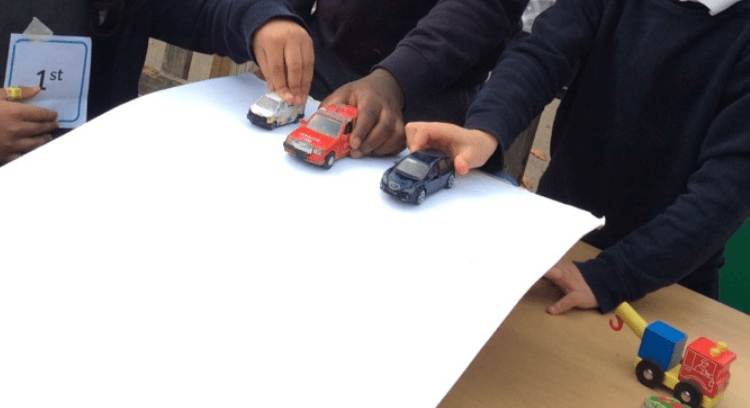
RE
On Saturday 14th November many families will be celebrating Diwali. You may watch a simple story animation below . You might like to use some coloured food such as rice, lentils or pasta to create a Rangoli design of your own.

Wednesday 11th November
Phonics
Please also have a look on Bug Club at the games you have been allocated
Art project
Today we made a huge piece of art using sunshine and positivity as our inspiration. Can you find some materials ( paper, fabric, paint, magazines ) to create your own image?
Maths
In maths we are continuing to look at ordinal numbers, you might like this clip! Also work through these slides and see if you can answer the questions.
Monday 9th November
Phonics:
Maths:
- try one or two of these sheets above
- try ordering your cars or other toys with sticky notes, labelling them1st, 2nd, 3rd, etc

Guided Reading:
- introduce this story through the PowerPoint above and discuss the front cover but don’t read the whole book yet!
- look at the setting of the story and find out what it looks like and what animals live there
Friday 6th November
Phonics
Alternative sound – ay
Here is the link to the powerpoint
Tricky words– oh, their, people
Maths
Art
Have a go at this spider activity.

Thursday 5th November
Phonics
Please also see Bug Club for allocated lessons and games focused on these sounds.
Maths
Play a game where you are sharing toys into three groups. Start with three toys, hoy can you share then into groups? Can you do it in a different way? They try five toys. Repeat the questions and record your findings!

P.E.
Art
Make a firework picture using anything you like! If you’d like some ideas look here
Friday 23rd October
Phonics– Access phonics play using the login mayfieldps and the password Mayfie1d then play the game ‘make a match’
Then play the game below:
Maths- addition to 20 below – the challenge is to try and ‘count on’ from the first number e.g. for the first calculation “6… 7, 8” (rather than counting the holes from the beginning)

Then have a go at filling the missing numbers in the part whole diagrams below

Other activities
Guided reading from the story ‘Here We Are’ by Oliver Jeffers
Thursday 22nd October
Phonics – have a look around the house for old magazines, leaflets or newspapers that you can cut up then have a go at making a capital and lowercase alphabet board! What do you notice about the different versions of letters you’ve found?
Today in phonics we’re practice ar and or

To start with read ‘On the Farm’ on Bug Club. List all of the ‘ar’ words you see and hear and add sound buttons to them.
Then do the activities sent via email.
Maths– See if you can solve the problems below using any resources to have at home to help you (e.g. 20 blocks/pom-poms etc)

Then try and match up these numerals and their names. Which words can you sound out, and which are ‘tricky’?

Creative activity – Use the sunshine artwork below as inspiration to make your own sunshine art!

Wednesday 21st October
Phonics – play the games on Bug Club connected to the digraphs j, v, w, x
Have a look out of your windows. Can you see anything outside which contain those sounds (van, box, jeep, wall, web etc.) – write them all down then have a look at which sound comes up most frequently? If you look out of a different window can you see anything else? See if you can write two sentences about what you can see using the words ‘the’ and ‘some’
Play the ‘Roy the Zebra – days of the week’ game
Maths – Watch ‘the whole of me’ again. As the video plays, use blocks or other counters to represent what the ‘whole’ and then what the ‘parts’ are. Can you show all of these in part-whole diagrams too?
Have a go at the interactive activities on this part-whole model
P.E.
Can you play ‘the floor is lava’ in your house somewhere? Use cushions, items of clothing, chairs, toys etc. to go over, around, under and through. If you’re struggling for ideas have a look here
Tuesday 20th October
Phonics – play the games on Bug Club connected to the digraphs ch, sh, th, ng
Go on a hunt around your home looking for objects which contain those sounds (chair, shirt, cloth, string etc.) – write them all down then have a look at which sound comes up most frequently?
Play this rhyming game or the ‘rhyming hot potato’ game set on Tapestry.
Maths
Solve the problem below (if you have toy animals you could use instead, do that!)

How many different ways can you put these 4 strawberries on 2 plates?

Creative task
If you have any lolly sticks/twigs/straws and pegs/corks/blocks – see what you can build! How high can you make it? Is it still strong? What makes it stronger/more stable?
Monday 19th October
Watch Mrs Stepney’s Assembly
Watch the story ‘The Dot’ and talk about it, what is it important to remember when you’re trying something new?

Make your own ‘Dot’ artwort – it could be made from paper mache, paint, colour pencil, collage, natural materials found outside.. the possibilities are endless!
Phonics – look at the sounds below and see if you can name them all.

(see the powerpoint emailed to you to write sentences to label the pictures, then practice ‘th’ and ‘ng’ sounds)
Complete daily reading on Bug Club and do the quiz!
Play the games set on Bug Club (focused on the sounds j, v, w, x
Maths
Find things around the house that are a ‘whole’ and have ‘parts’ e.g. and egg box with eggs in.
How do we know this is the whole box of eggs? = the box is full, there are no eggs missing.
How could you show the different parts? e.g. a part is 2 eggs, a part is 4 eggs, the whole is 6 eggs.
Show them the egg box with small toys/blocks/buttons – children to show a ‘whole group of / not a whole group’ This is a whole group because none for them are missing. This is not a whole group because only part of the box has ____ in.
Writing
Write a note to a friend (and add it on Tapestry) with the sentence starters;
‘I like it when…’
‘Thank you for…’









